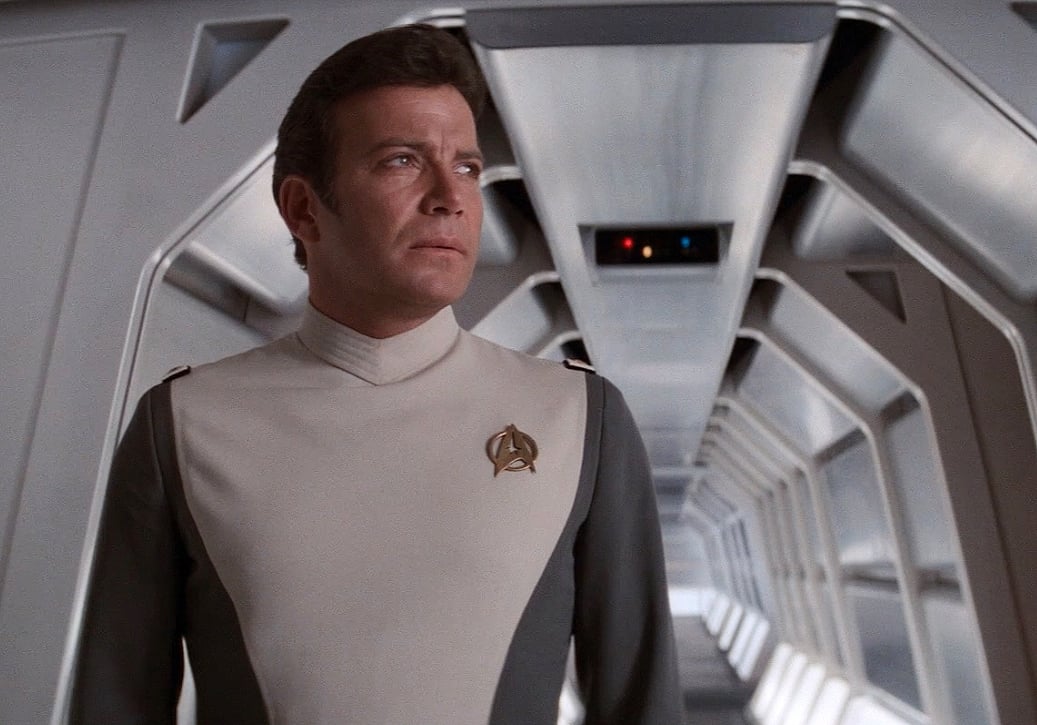SPONSORED BY: The ASC Master Class
In this episode of the AC Podcast, American Cinematographer’s web director and publisher David E. Williams talks to M. David Mullen, ASC about pretty much everything related to 1979’s Star Trek: The Motion Picture, directed by Robert Wise and photographed by Richard H. Kline, ASC.
Mullen's knowledge of Star Trek runs incredibly deep, so while the conversation starts out with The Motion Picture, it broadens to cover the cinematography and visual design of the whole Trek franchise, from optical effects to costumes, as well as related films like 1971’s The Andromeda Strain, which was also directed by Wise and shot by Kline.
This episode goes where no podcast has gone before, offering a unique and far-reaching look at the making of a science-fiction classic from the perspective of a true artist, and a true fan.
ABOUT THE PARTICIPANTS
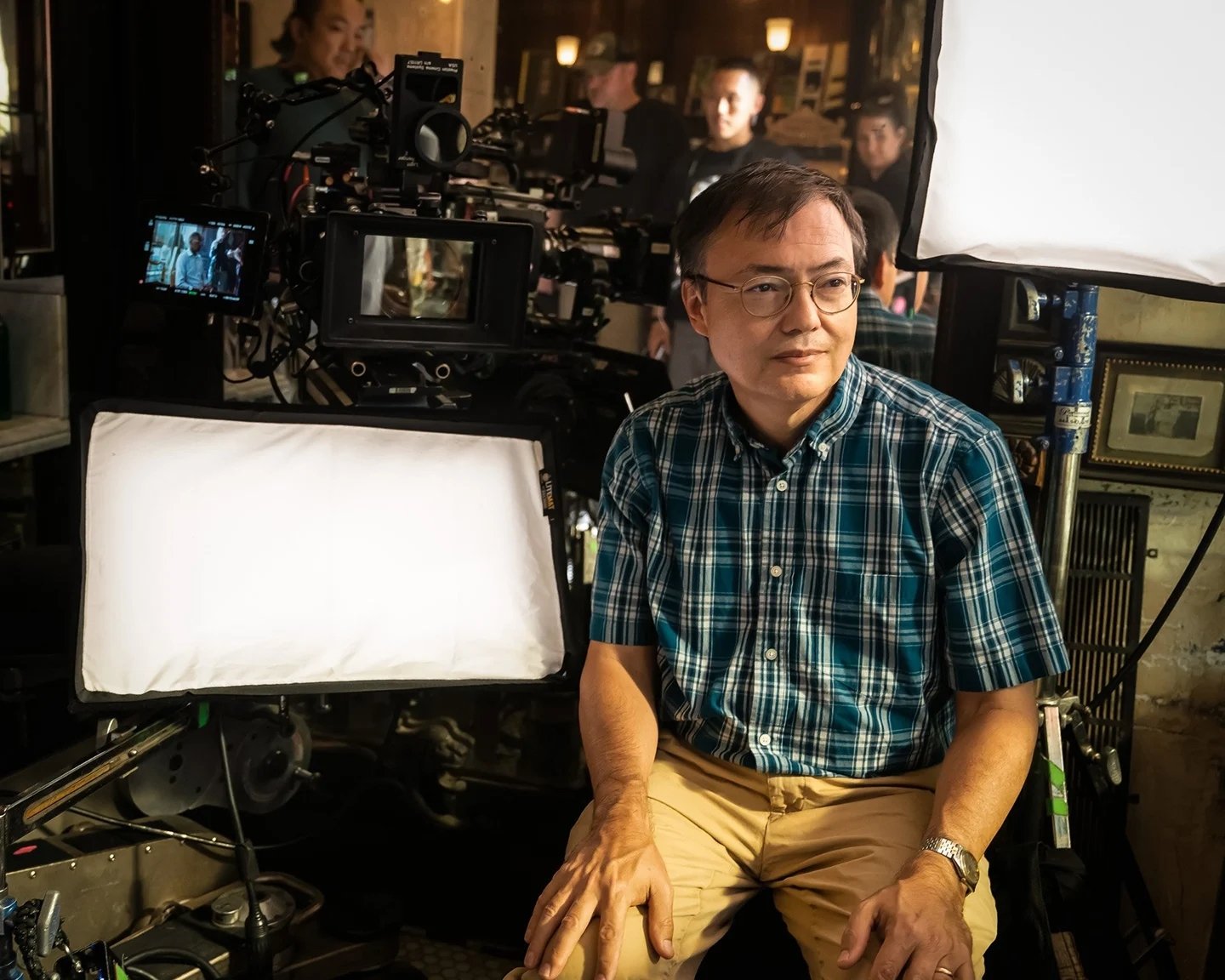
M. David Mullen, ASC (above) is known for his feature photography in Twin Falls Idaho, Jennifer's Body and The Love Witch. His recent television work includes The Marvelous Mrs. Maisel (for which he has earned four ASC Award nominations — winning in 2023 — and two Emmys for Outstanding Cinematography for a Single-Camera Series), Big Love, Get Shorty, and the pilot episode of Designated Survivor. He is the co-author of Cinematography (Third Edition), with Krzysztof Malkiewicz, and co-editor of the American Cinematographer Manual, 11th Ed. with ASC associate member Rob Hummel.
Williams was a staff editor at AC from 1995 until 2000, when he left to become the executive editor of features at The Hollywood Reporter. He then served as the editor-in-chief of publications including the sci-fi journal Cinefantastique, the tech trade Digital Video, and the award-winning pop-culture magazine Geek. He rejoined the AC staff in 2016 and became publisher in 2022. His past stories for AC can be found here.
AC stories touched on in this episode:
50 Years of Star Trek in AC
Filming 2001: A Space Odyssey
Photographing The Andromeda Strain
A Legacy Rewarded: Richard H. Kline, ASC
Behind the Scenes of The Spy Who Loved Me — Plus Pinewood’s 007 Stage
Photographing All the President’s Men by Gordon Willis, ASC
Sam Nicholson, ASC: Uncharted Territory
Filming Planet Of The Apes
Photographing Logan’s Run With Ernest Laszlo, ASC
Star Wars: Miniature and Mechanical Special Effects by John Dykstra, ASC
Alien and Its Photographic Challenges by Derek Vanlint, BSC
Boldly Going Virtual with Star Trek: Strange New Worlds
Shot Craft: Deep Focus - Diopters
TRANSCRIPT
David Williams: Hello, everyone. Today we're at the Arri Education Center at the American Society of Cinematographers, and I'm sitting here today with M. David Mullen, ASC, a Star Trek fan.
M. David Mullen: Hi. I'm very happy to be talking about Star Trek. I hope you have six hours to spare.
[laughing]
David Williams: In some of our sort of pre-interview discussion, you really started going into very minute detail. You've clearly studied this film many, many times. Tell me a little bit about your original relationship with this movie.
M. David Mullen: Well, as a young person, I was very heavily into the original Star Trek series when it went into reruns in the late ’60s. It used to play twice a day on my local TV station, and I'd watch it twice a day. So I got to know these episodes very, very well. And then of course, we heard that they were going to make a movie version when I was in high school. I got very, very excited to see that. And it came out when I was 17, my last year of high school, when I had moved to Virginia. And so I saw it in Washington D.C. And it was just such an amazing experience to see Star Trek come back to life, but being such a nerd and at this point, I had gotten heavily into 2001 [A Space Odyssey], which I finally also saw on television in '77 and then when I moved to Virginia, I got to see it in a theater. So I had lots of opinions about how they should do the costumes and the sets and the lighting and and I was well-versed in the cinematography of the original series, although I didn't know at the time the names of all the DPs in the history of the production of the pilots — the two pilots in the series — and I didn't know Richard Kline at the time when I saw Star Trek obviously because I was 17 but years later I did get to know Richard and and he was always surprised that my obsession over Star Trek, he was he was scratching his head because he was not a Star Trek nerd like I was so...
David Williams: Well and of course Richard Kline, ASC is the cinematographer of this project and he had previously worked with Robert Wise on The Andromeda Strain.
M. David Mullen: Yes and Andromeda Strain is a very good model for Star Trek. The two films are shot in a similar style. Similar use of split-diopter filters. I think both films together hold the record for all-time number of split diopter shots. Someone recently said they were like 78 split diopter shots in Andromeda Strain, and I've counted almost the same number in Star Trek so it's quite impressive when you think of it that way. But the DNA of Star Trek is in Andromeda Strain in a lot of ways.
[Editor’s Note: There are 208 documented split-diopter shots in The Andromeda Strain and 108 in ST:TMP.]
David Williams: As we were discussing before, the DNA of the original series is in this movie so much. It's such a continuation of that storytelling. And even in terms of the style, you'll see, you know, in the production design, specifically there was this scene in Kirk's ready room when he's sort of dressing down Decker. And you look at the certain shapes of various things, and it's like, it's the colors. It's the shapes. It's the whole approach to that kind of design, but it's just on a bigger scale.
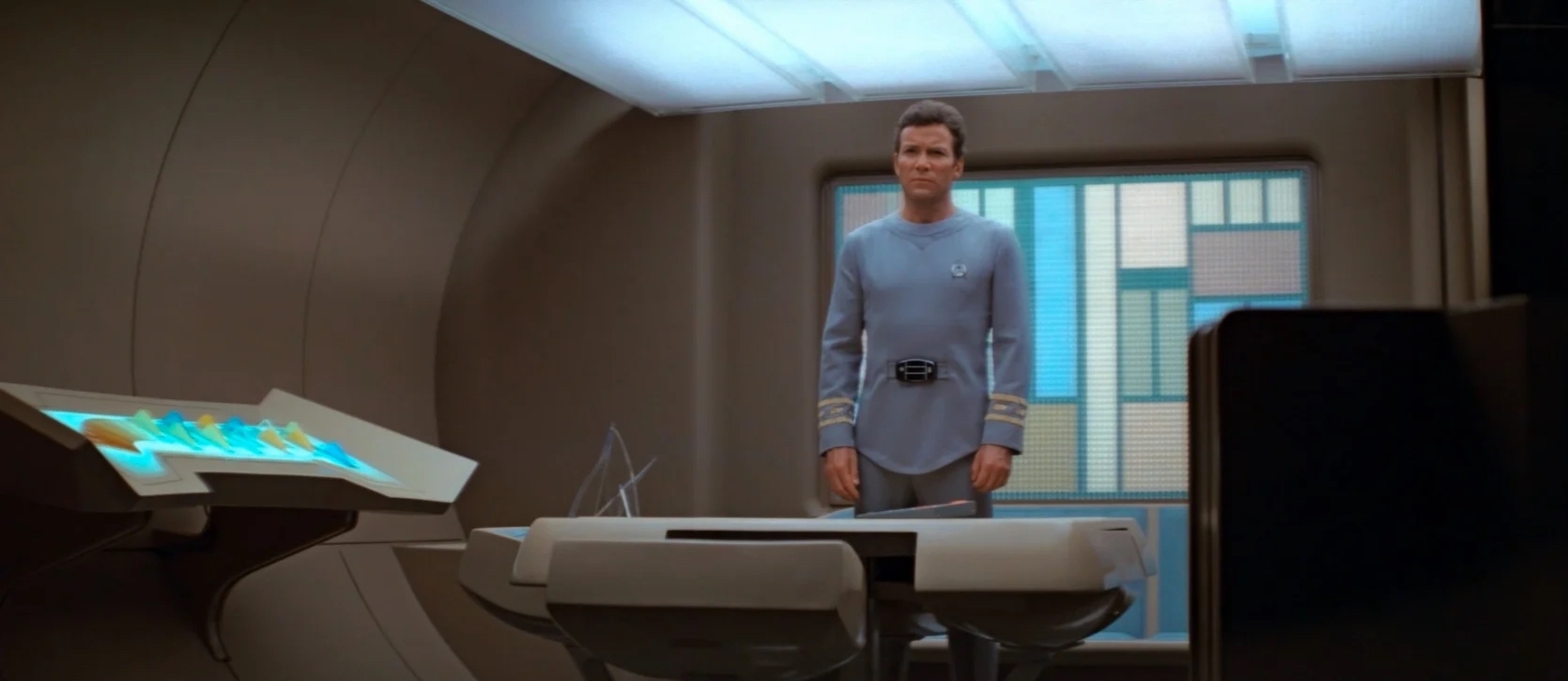
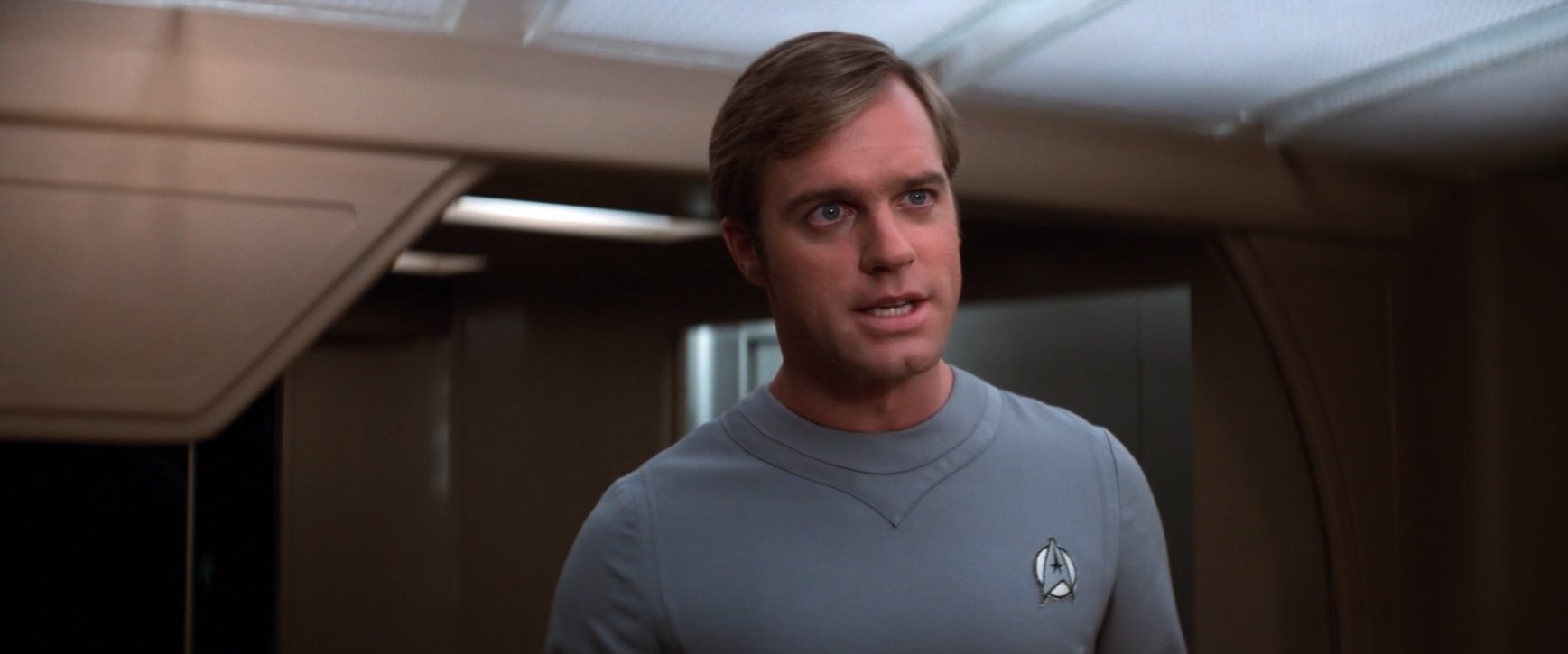
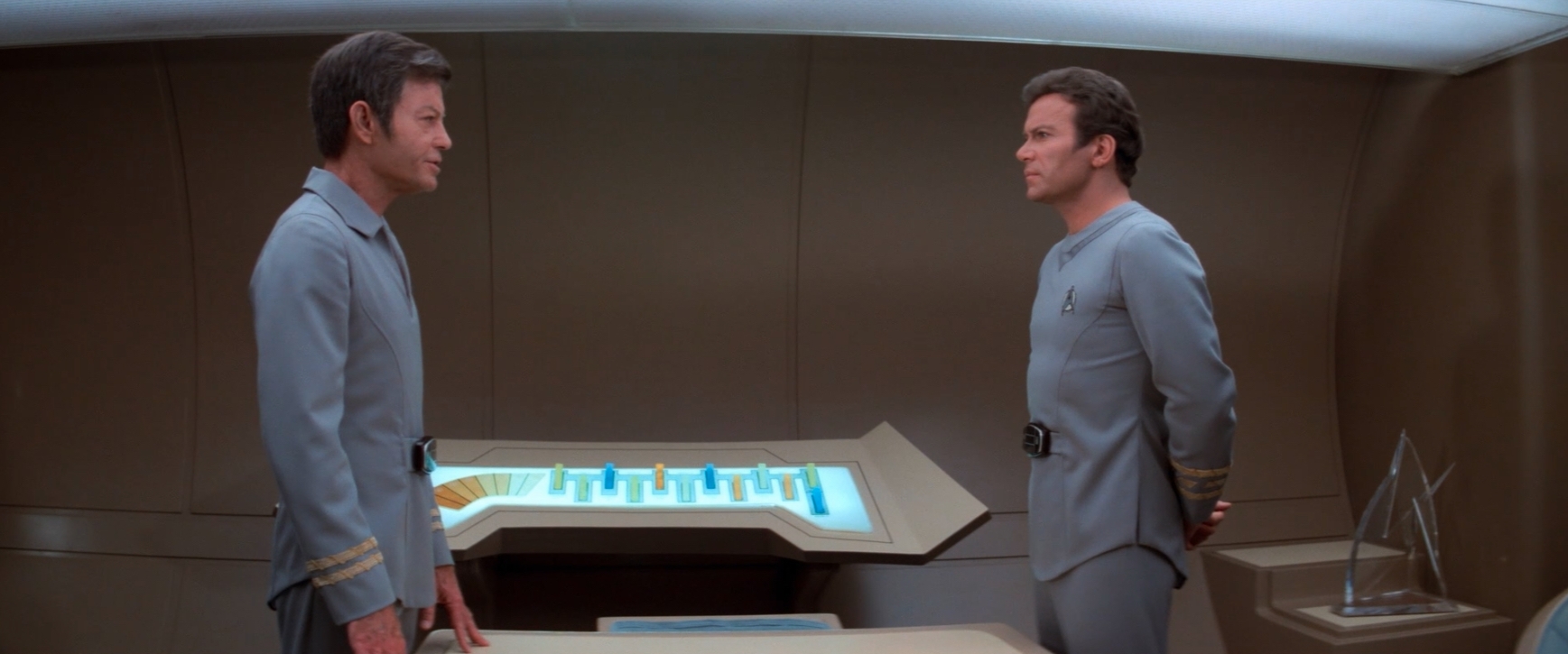
M. David Mullen: Yeah. And this film originally was going to be a TV series. They called it Phase Two at the time, and they built a lot of the sets for Phase Two. So they were television sets that then got redressed by Harold Michelson when it became a big-budget feature film. So even in the course of watching this movie, you see a kind of odd mix of of art directing styles because [Star Trek I production designer] Harold Michelson, I think, I don't know for sure, but he had probably seen what [production designer] Ken Adams did for the James Bond films — for The Spy Who Loved Me, which has heavy use of aluminum and/or stainless steel kind of cladding on the sets and used in... You see that in the submarine pen set in The Spy Who Loved Me, and I think [Michelson] took a lot of the sets and Star Trek and started cladding them in stainless steel to make it look less like painted plywood.
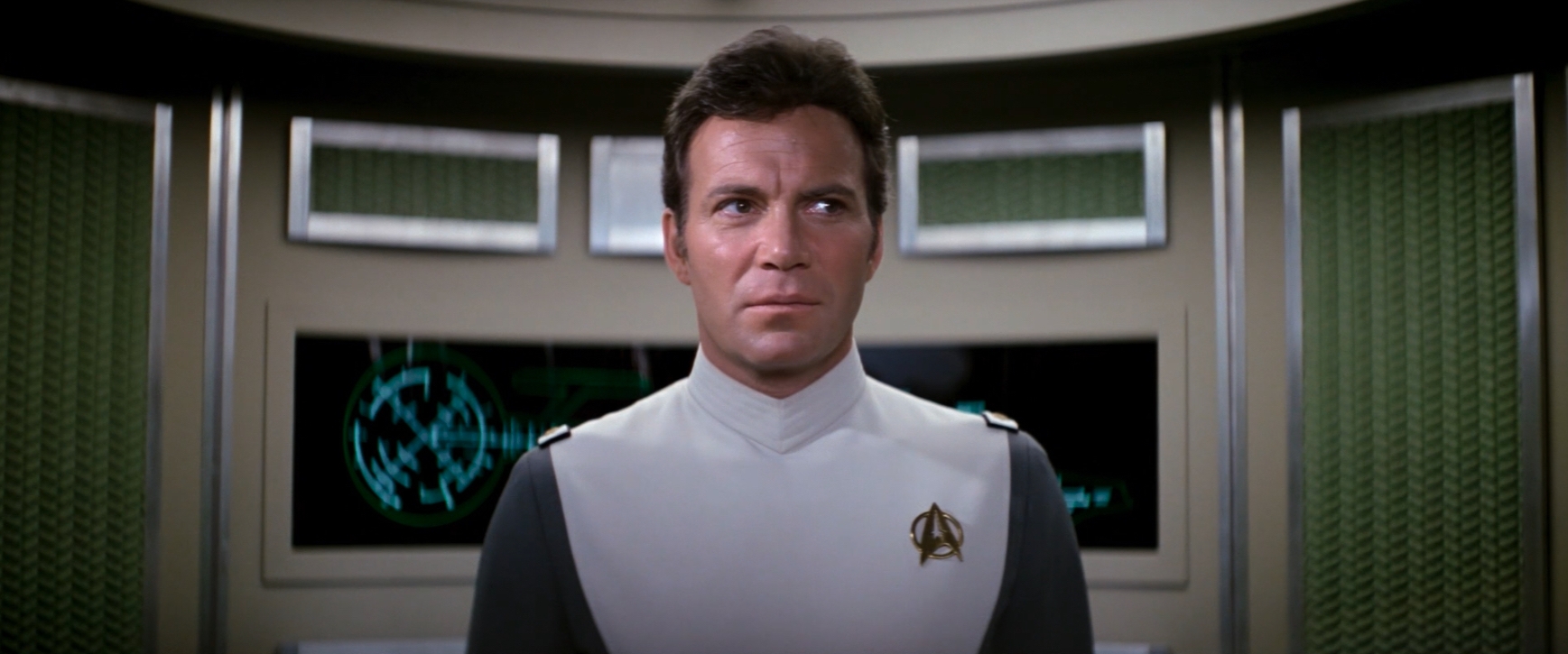
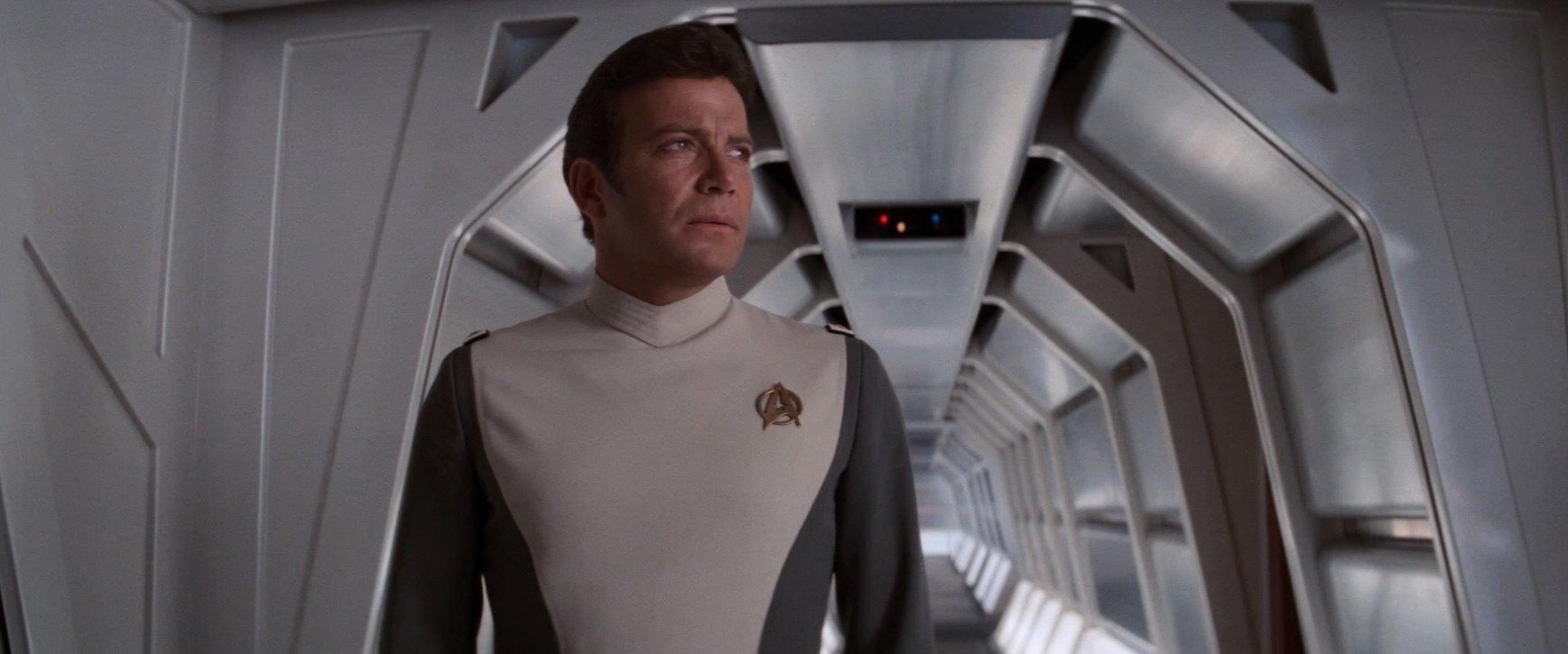
But the bridge set is still built in the style of the original series with curved wooden walls that were painted in flat gray or something like that. And then, but then the hallways got reclad in metal. So the sets have a kind of strange, hybrid quality to them.
David Williams: Visually, I always connected, too, the stainless steel of various aspects of the Enterprise with all the stainless steel in Andromeda Strain. The way all the labs and everything had that metallic, futuristic feel and that very spare, silvery-gray quality.
M. David Mullen: I think some of it was just the architectural movements of the ’70s. You know, if you go to Washington, DC, where I lived for a while, and you go into the the Metro stations and ride the Metro cars, they remind you a lot of the art direction of Star Trek and Space 1999, this kind of Brutalism architecture with a lot of geometric shapes. And, you know, square rounded rectangular windows, and everything's very modular. So that design approach, it was popular in architecture, it was also popular in science fiction in the ’70s, and Star Trek.
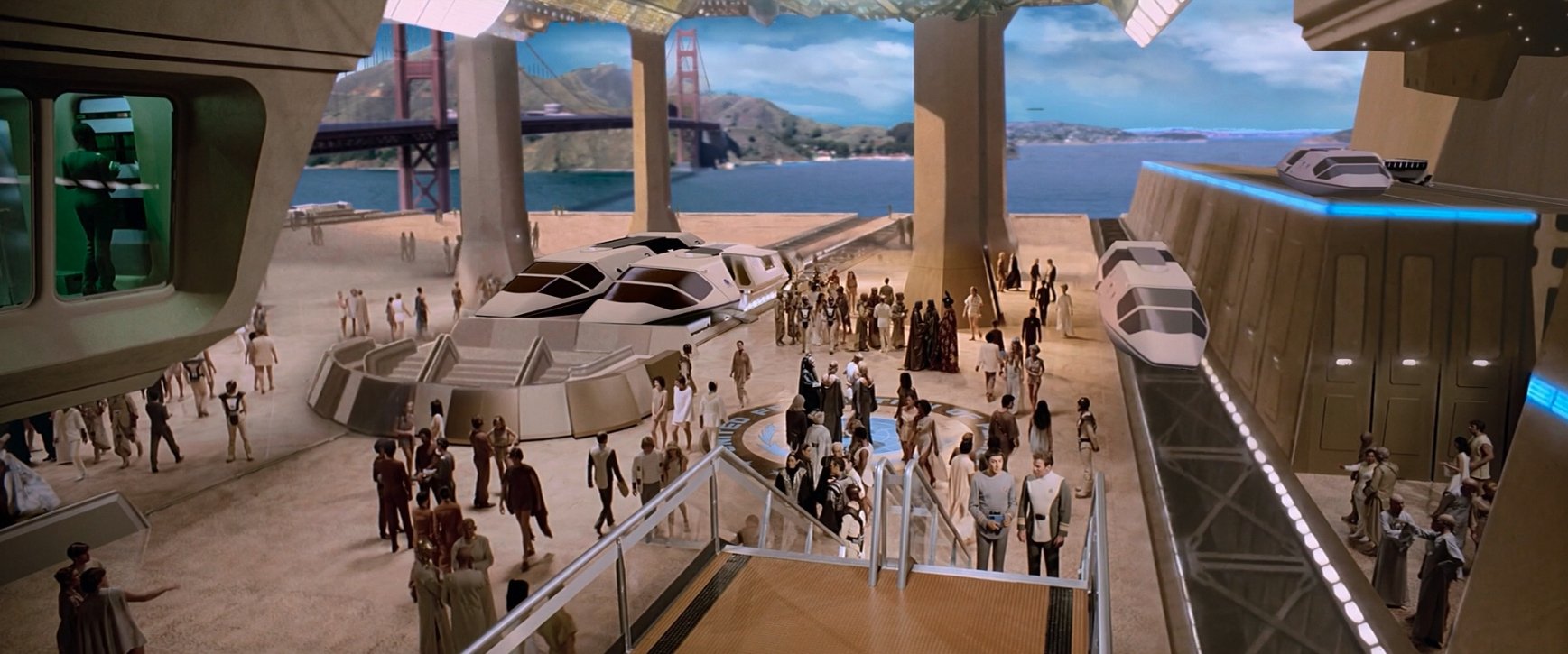
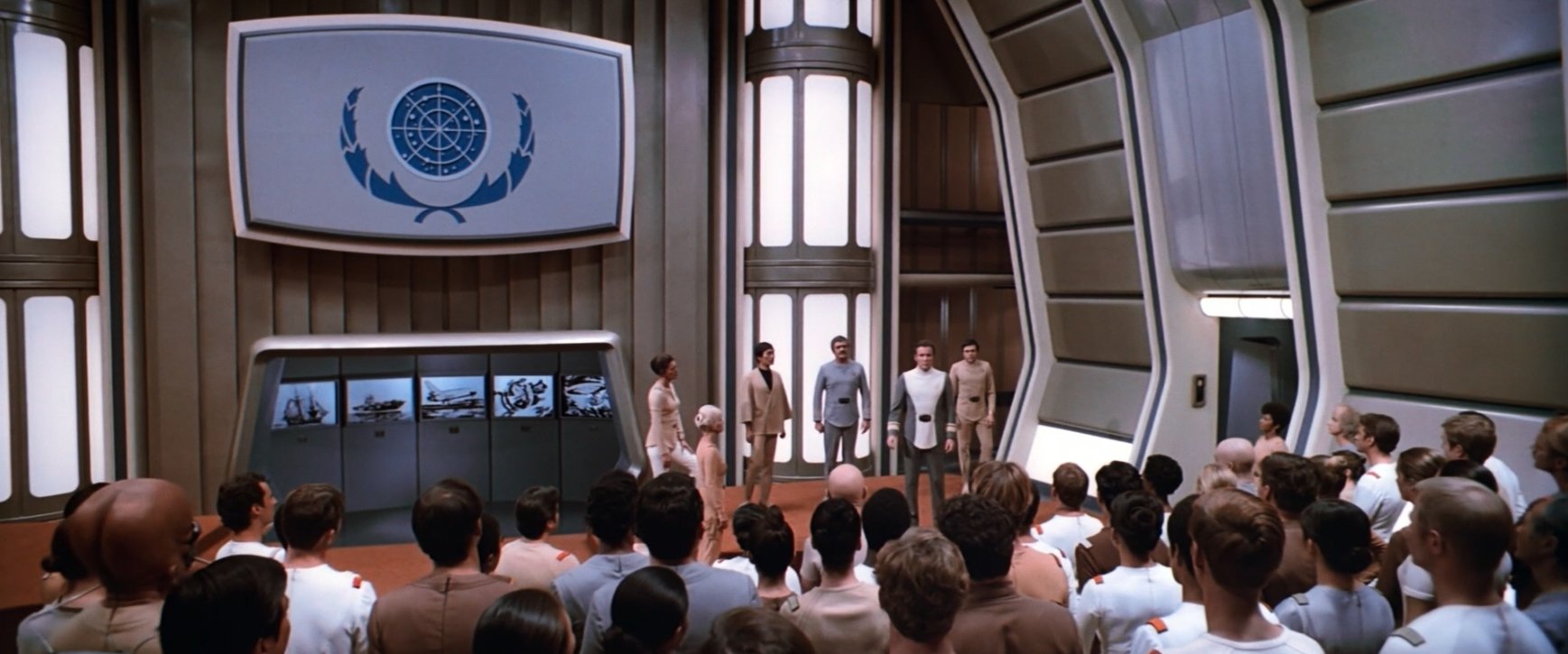
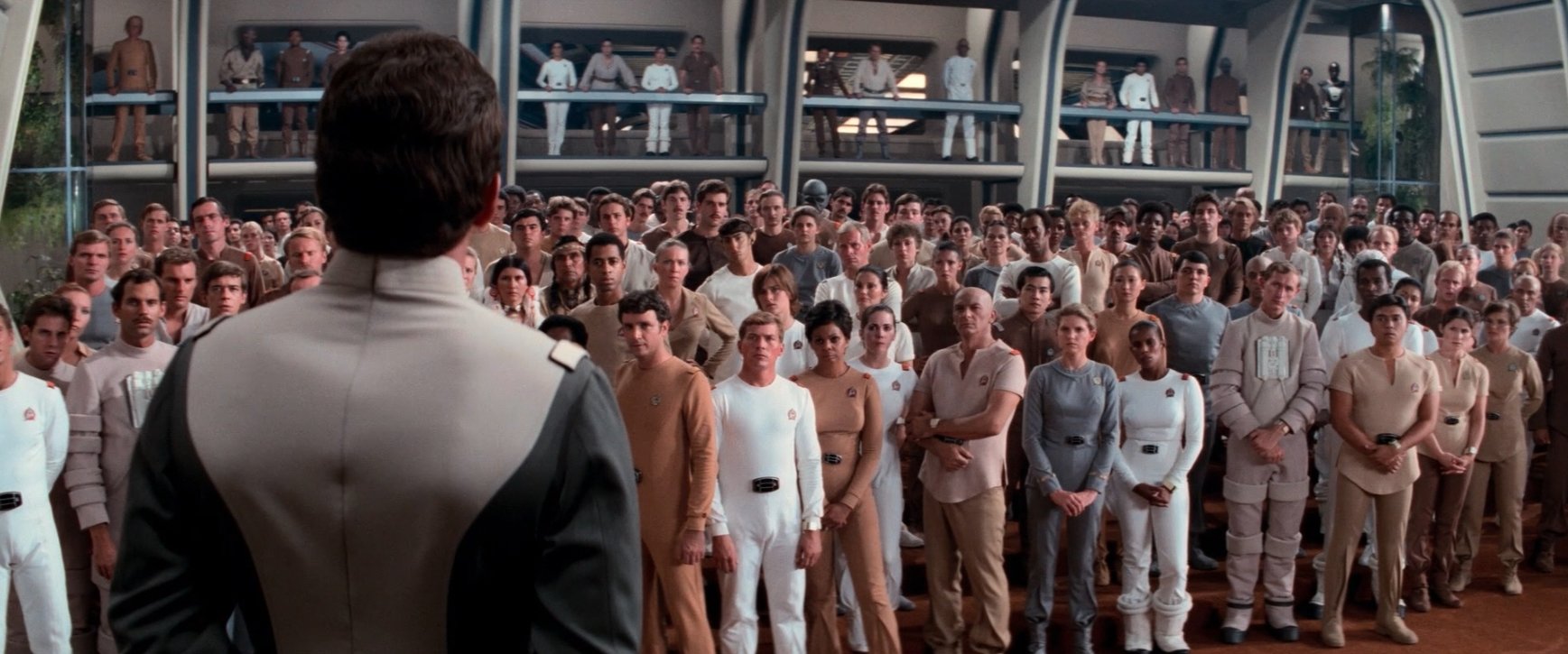
So it's a continuation of the original series, modified through the eyes of the ’70s. And some of that you see in the color schemes, the use of, of orange upholstery, and things like that is very much a ’70s kind of touch, which is interesting, because Robert Wise himself, his films tend to be on the cool side. So you've got these warm art direction touches in the film, and yet, a lot of the film has a cold, steely quality too, and some scenes are very lit very cold and some scenes are lit warmer. And I've got the impression over the years that Robert Wise just kind of wanted to pull back from the coldness of Star Trek. I know in the [Director's Cut], they've timed scenes warmer than the original release prints really had. And I don't know if that's Wise kind of thinking maybe he should warm up the film and make it less cold. Or his tastes changed. If you read interviews with him in the ’70s, like for Hindenburg, he talks about how he doesn't like warm printed scenes. But that might have been because Hindenburg was a period film, and he didn't like the way period films in the ’70s were getting very orangey and golden, and he wanted Hindenburg to have a kind of steely gray quality to it. But Star Trek has also some similarities with the Hindenburg. I think that was shot by... I think that was Bob Surtees [ASC]. But there is an interesting history of the cinematography of Star Trek, and it goes past this film, because with Star Trek I, II, III and IV, you have these films made in the ’80s, right at the beginning of of the release of new high-speed film stocks from Kodak and Fuji, and so the early Star Trek features are kind of a snapshot of the technology changes that were happening in the ’80s in the film industry. And this film was a reflection of what, of course, technology was happening at the end of the ’70s. So, one could certainly teach a class about the history of cinematography based around Star Trek, I think because it's rare that you get the same actors and similar sets being lit by different cinematographers with different technology as it's evolving through that decade. So it's kind of fascinating, from a purely archaeological standpoint, but as a Star Trek fan, too, it was interesting to see how they reimagined Star Trek, clearly influenced by 2001 at this point, both story-wise and style-wise. But there are elements of the original series in there, some of the shadowy lighting on the bridge is reminiscent of some of the things that Gerry Finnerman [ASC] did, particularly in the first season of the original series.
David Williams: When you spoke with Richard Kline, he was surprised that it had the enduring quality that it has had. For him the enduring quality — I think, in the way that he spoke to me — was Robert Wise. It wasn't about Star Trek. It was about the storyteller and how the canvas was painted. I don't think he understood the fanaticism about Star Trek.
M. David Mullen: No, he was a different generation. I don't think, you know, he was watching Star Trek as a young person. He was working as a cinematographer in the ’60s. So, yeah, I don't think he was a fan. And he didn't. You know, he approached it, I think fresh, you know, with Robert Wise, really based on their work on Andromeda Strain and Wise's interest in deep-focus cinematography, because he was the editor on Citizen Kane. I think his lesson from working with Orson Welles [and Gregg Toland, ASC] is that there's a certain powerful graphic quality to deep-focus compositions. If you stage it properly for the lens where you have things happening in foreground and mid-ground and background. And Star Trek in particular, every cinematographer who has had to deal with that bridge set, even in the current versions of Star Trek, you have essentially a circular room where, where you have a navigator and helmsman in the foreground, the captain in the mid-ground, and then someone at a console in the background and dialogue is flying back and forth all around the captain.
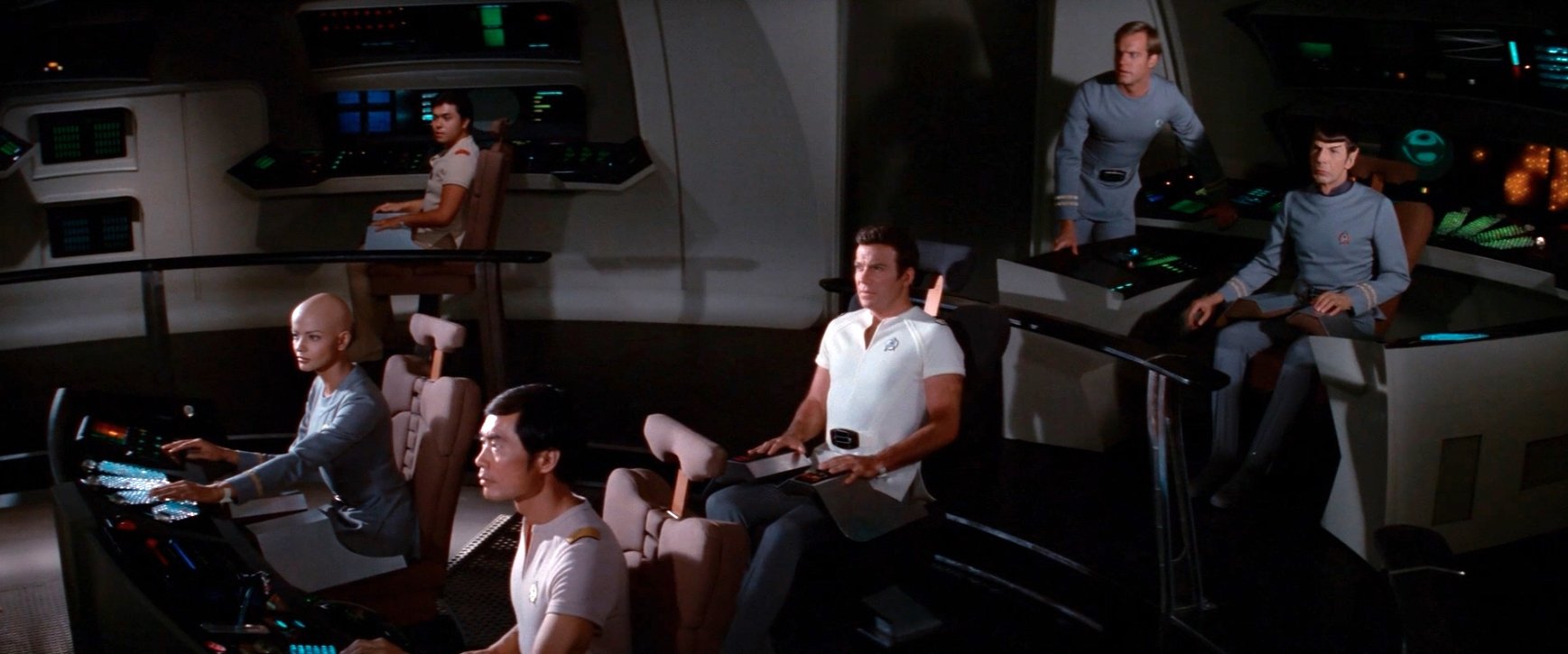
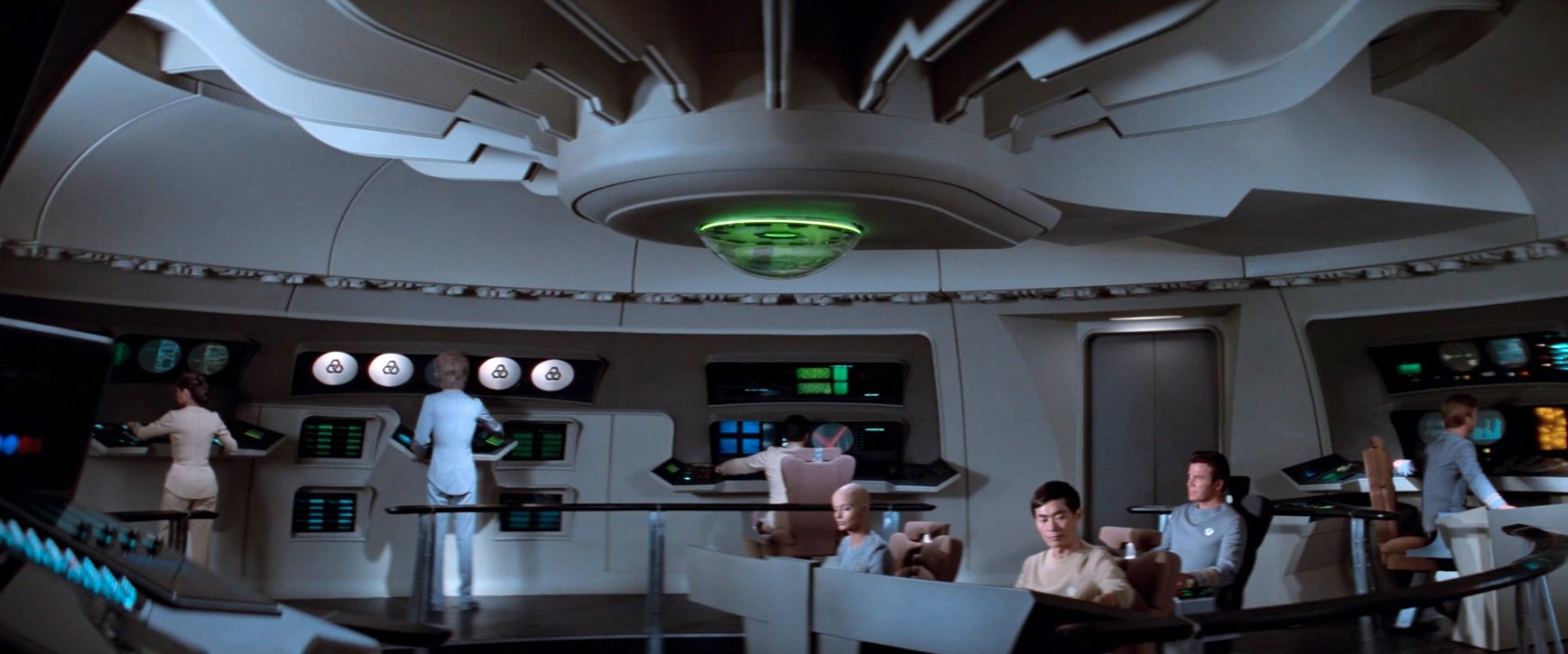
And this, you know, you're even having to deal with focus racks or focus splits or camera moves, or it's a staging and depth problem inherent in the design of the bridge, and it was that way, ever since the original series. In the ’60s, they solved it by using a lot of light and stopping down. And it's amazing when you watch the original Star Trek, considering it was done on a television schedule, how scenes seem to be lit to a deep stop at times to hold Kirk in the foreground and Spock in the background in fairly good focus. And considering there was only 50 ASA film too, it's just amazing. In the case of Star Trek: The Motion Picture, they resorted to split-diopter filters to create a deep-focus effect, because they couldn't light the sets to a deep stop.
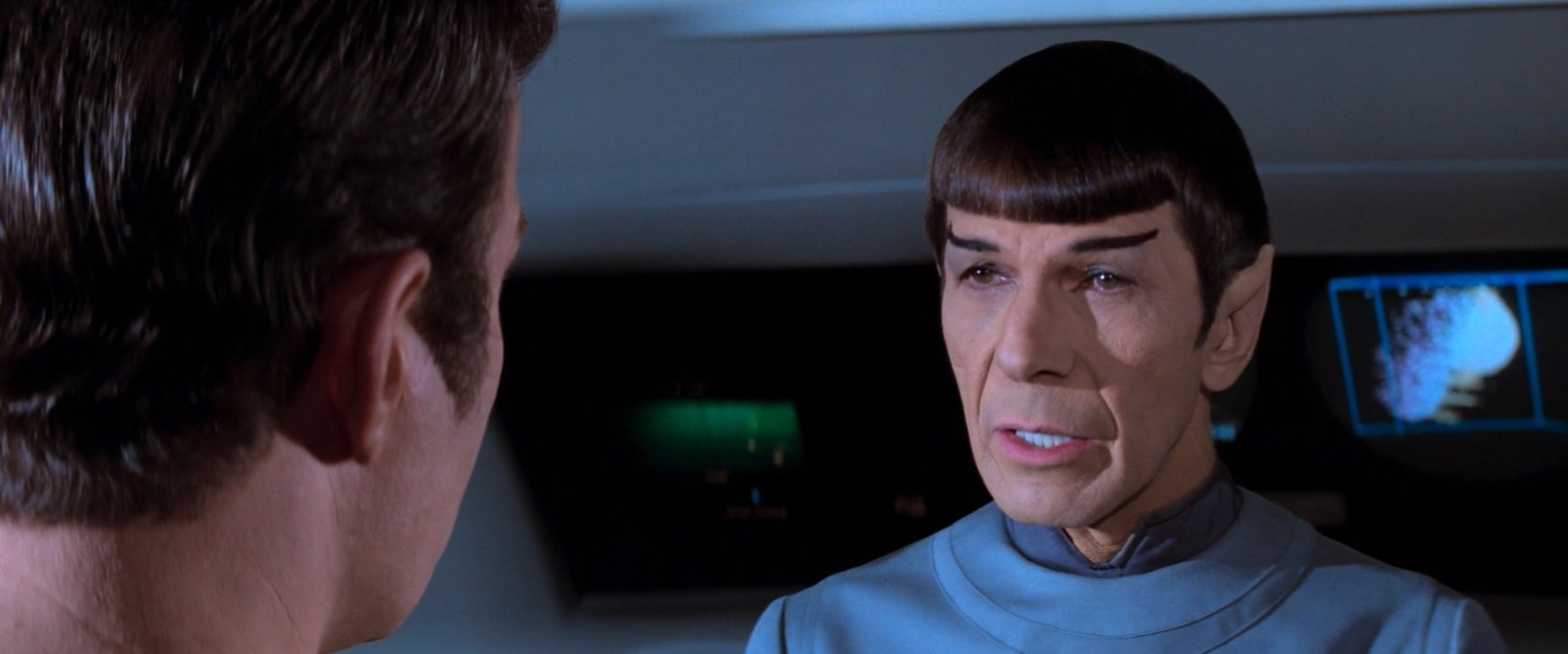
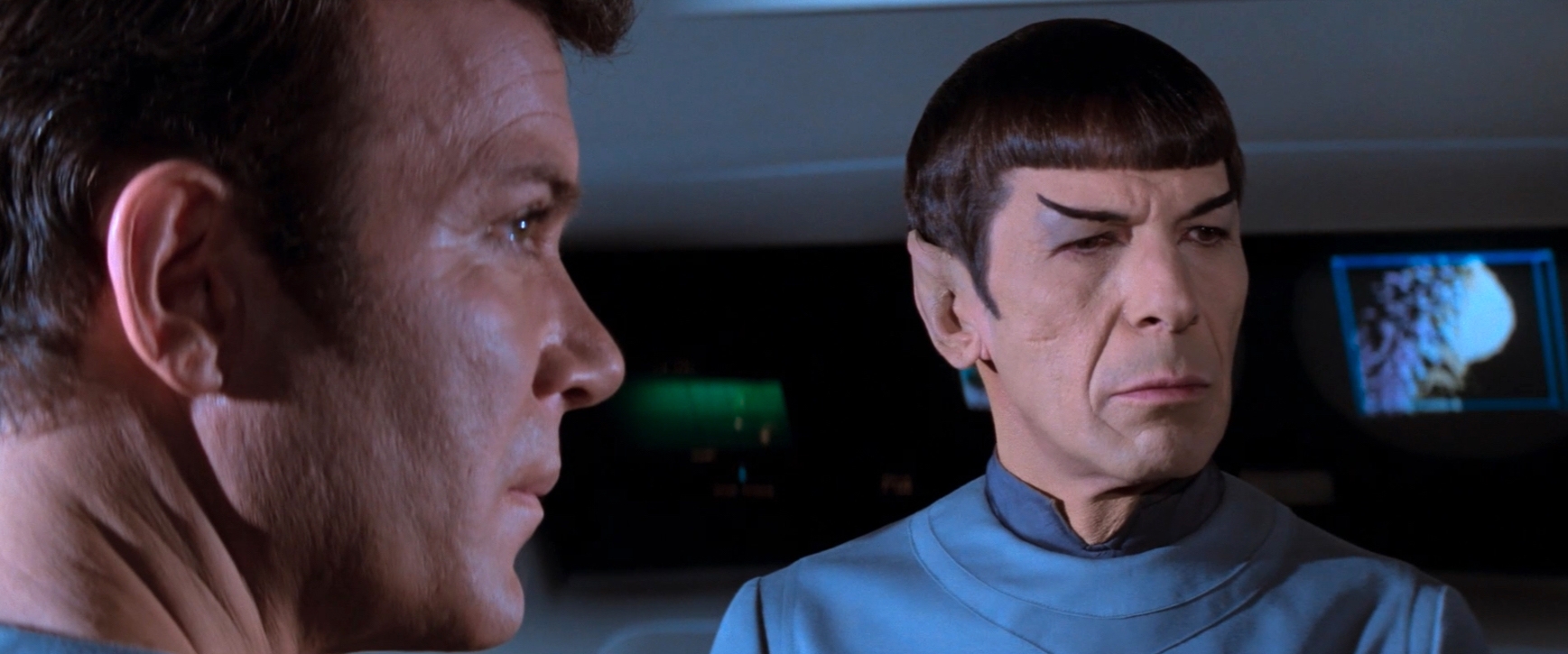
The lighting of the consoles, the rear projection of the TV screens, those were all 16mm projectors, and so they had a set amount of illumination, where they would read which is probably about a 2.8. So most of Star Trek [TMP] is shot at a 2.8, but they're trying to create the effect of being shot at like 5.6 or an 8 by using split-diopter filters. There are a few shots in the film, where they just sort of lit to a deep stop because either they couldn't use a split diopter or because there was visual effects involved and they needed a better stop for the anamorphic lenses when they switched to VistaVision or 65mm and you can see the the lighting of the room change, you can see that the consoles are fairly dim, the buttons don't read very brightly. But everything's in focus now. I'm not sure the rhyme or reason. Some of it was... there's a sequence near the end where William Shatner proposed doing it mostly in a, not a true oner, but mostly in a dolly move where Kirk is bluffing and, and has everyone leave the bridge and Enterprise and turn everything off, and they all go into the elevator, and Ilia's left standing alone in the room. And the camera's just dollying forward and back with Shatner as he goes into the elevator and back into the room and back in the elevator. And most of the scene is playing in that one shot with the reverse angle. And you can tell that they had the light to a higher stop for that camera move. But in that case, all the consoles have been turned off story-wise, which is why, you know, Kline didn't feel the need to work at a low level of illumination. And he could work at a higher stop for that.
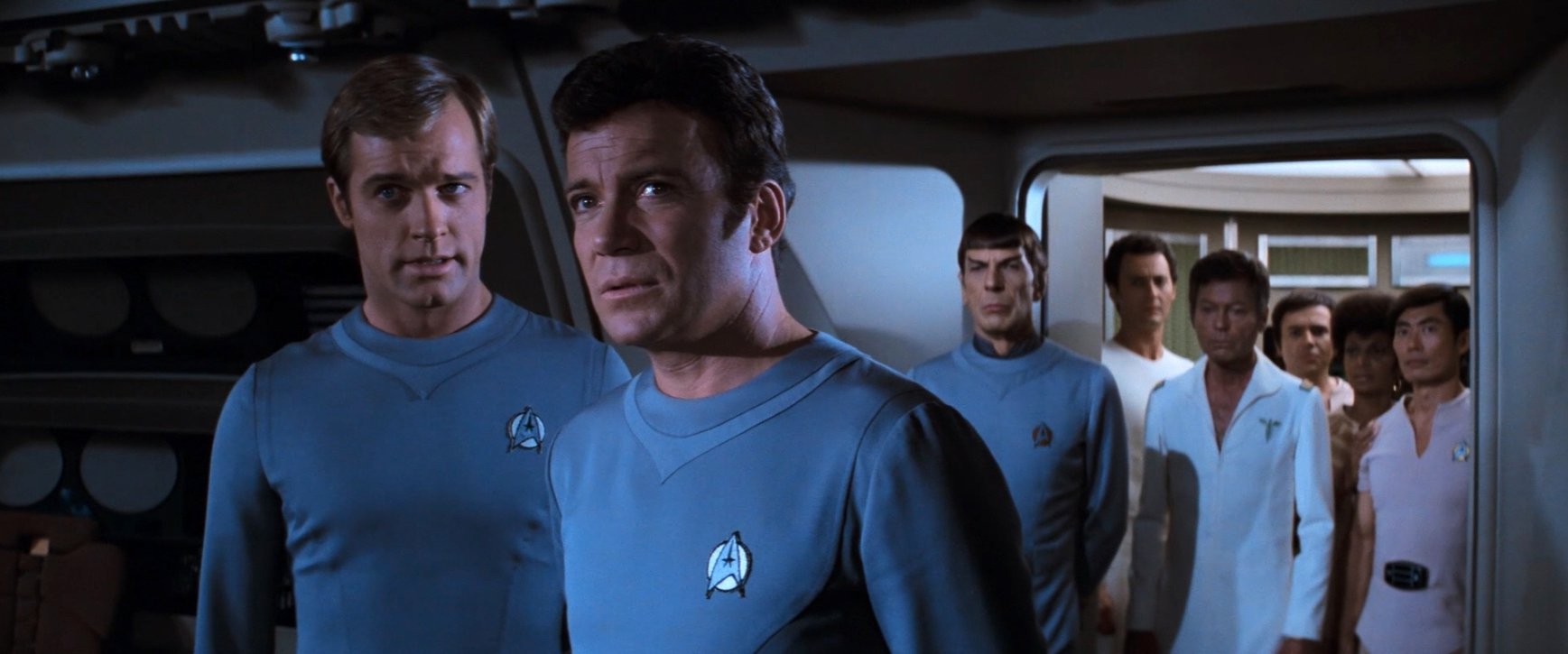
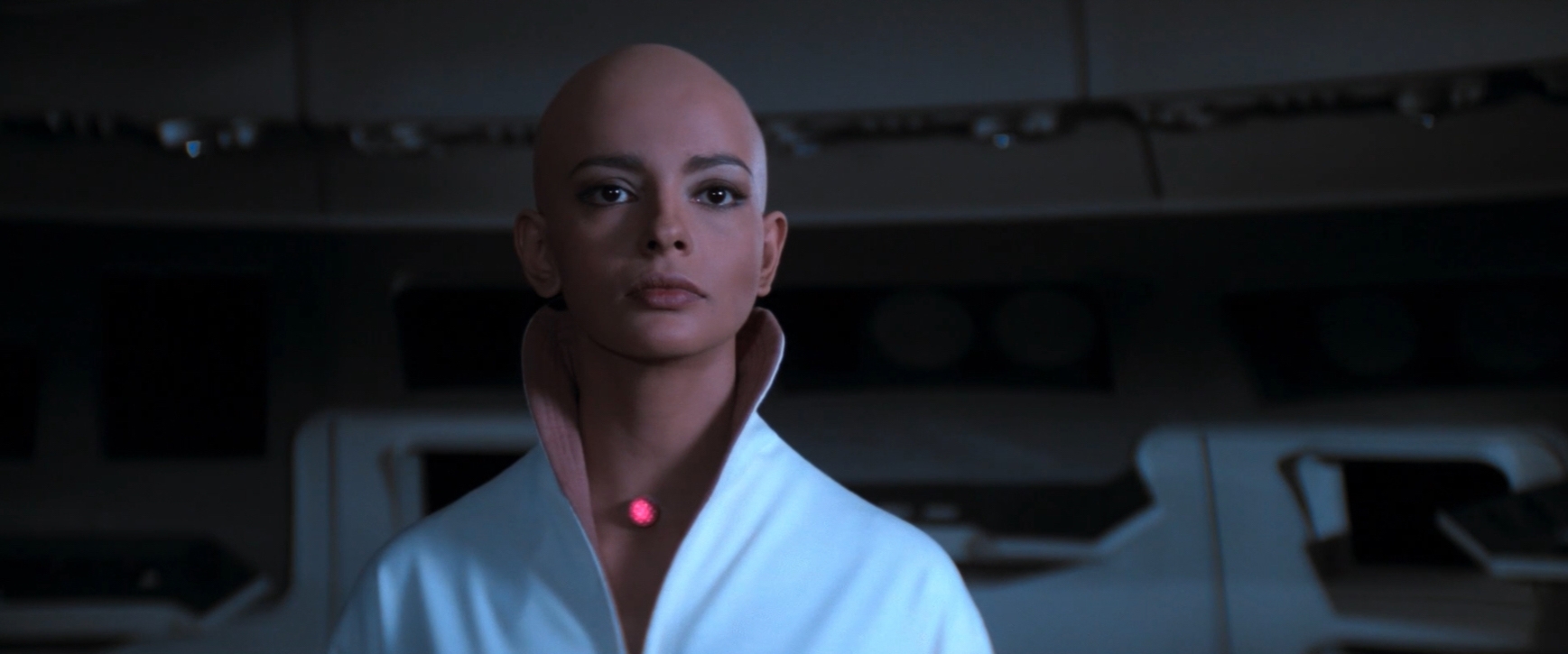
David Williams: As a cinematographer, how often have you been put into a position where because of some production factor, you're forced to shoot in a certain way that you wouldn't have normally wanted to do it, but it ends up having to become a style. In this case with Kline, as you described with the illumination of the consoles and playback and whatnot, he was kind of trapped, and he came up with the solution of the split diopters, which you know, as you described. But they made it a style, you know, and it's one that's very memorable and very effective. Have you been in that situation before?
M. David Mullen: Well you try not to get caught, because you... But yes you, whenever you plan the look of any project, you have to factor in what you can control and what you can't control. You can't control how bright a candle is, so you have to work with how bright a candle is, or, or if there's going to be a burning building in the shot, how bright that can be. You have to stage everything around those factors. In the case of a roomful of TV sets or other things where you can't really adjust the levels too much, you plan around that. However, if the director says he wants to use a zoom lens, that is a set certain amount of light you need for that versus a prime lens. In the 70s a lot of films, despite the fact that film was only 100 ASA, it was very popular to use zoom lenses for everything. So in an anamorphic film, particularly wide open is 4/5.6 split. So you see these films trying to do low-light photography, but with a zoom lens by pushing the film stock, you know, like Vilmos Zsigmond [ASC, HSC]'s work in McCabe and Mrs. Miller and stuff. But in the case of Star Trek [TMP], they wanted a very pristine, clean, sharp look, so they opted not to push the film for the most part, which meant working at 100 ASA and with monitors that had to be shot at a 2.8. So Wise was not particularly a zoom lens kind of director, luckily for Kline, so in that aspect, he could work with prime lenses, but also just because they didn't have the stop for a zoom. And as I said, when you see the movie, the few times the zoom lens comes out, you can see the lights of the consoles are dimmer, because they've lit now to a 4/5.6 instead of a 2.8.
David Williams: There's one scene aboard the Enterprise on the bridge, when the V'ger probe comes in, and basically takes Ilia off the bridge, and there's a huge, massive shift in image quality and color. What can you tell us about that?
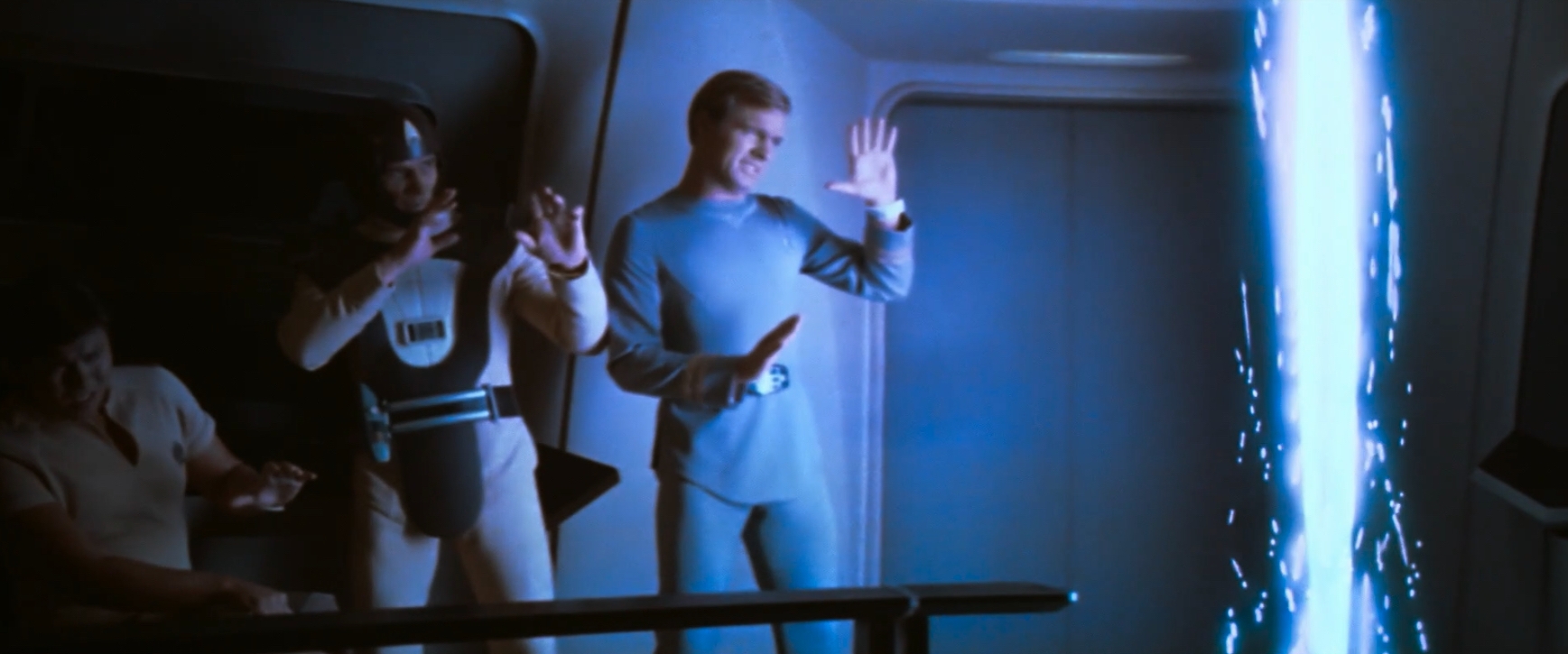
M. David Mullen: Well, they wanted the sequence to be lit just by this bright light of this probe, which was a column of some sort of xenon, I think, type-lighting rig that was pushed around on a dolly by a grip. And the problem was that in the original live-action footage, there's a brilliant shaft of light, this device, and it's the only lighting in the room, so it actually all the light's coming from this bright column of light. But the original live-action footage, you could see a guy pushing it around.

And when [VFX supervisor] Robert Abel was fired off the effects for the film and [Douglas] Trumbull and [John] Dykstra [ASC] took over, they had no idea what Abel's plan was to get rid of the dolly grip out of the shot. And so I think it was Dykstra who took over this sequence. And his solution was to rear project this footage onto a screen and then reflect it off of a mylar screen.
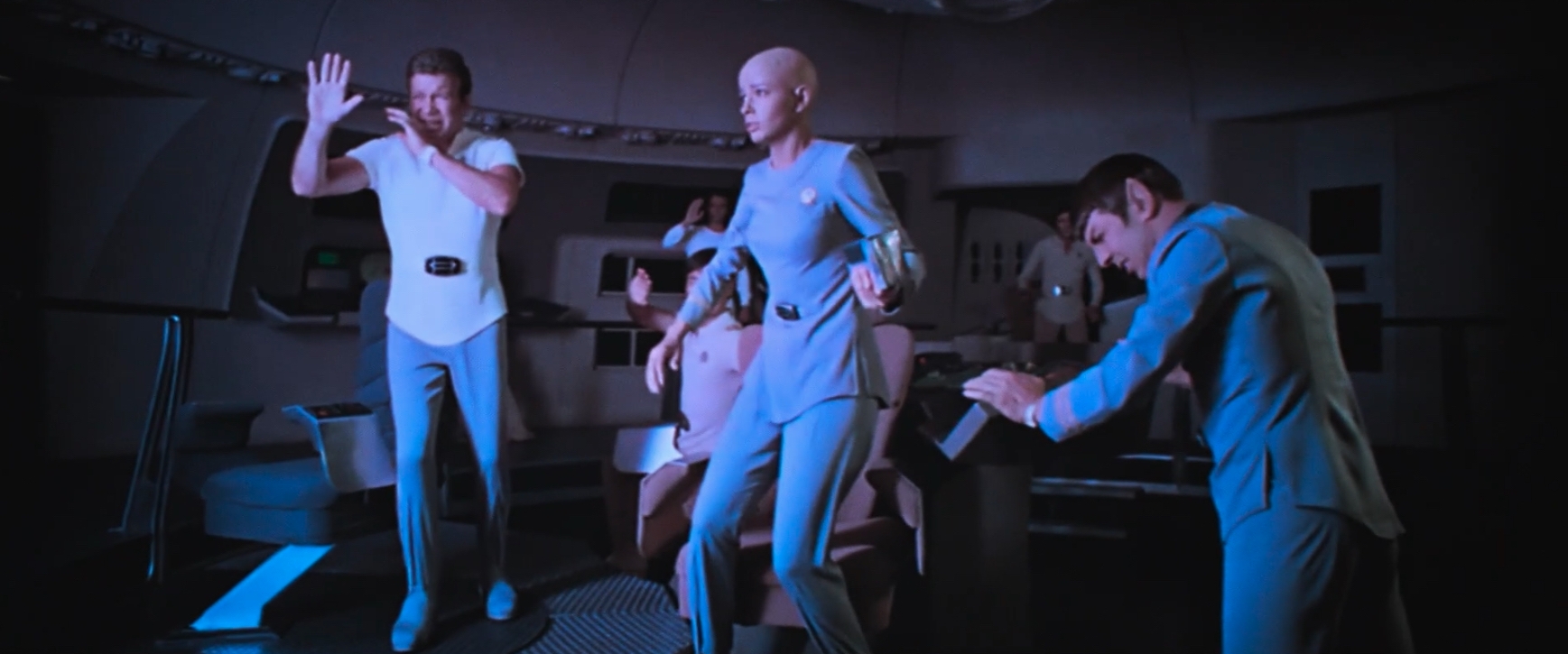
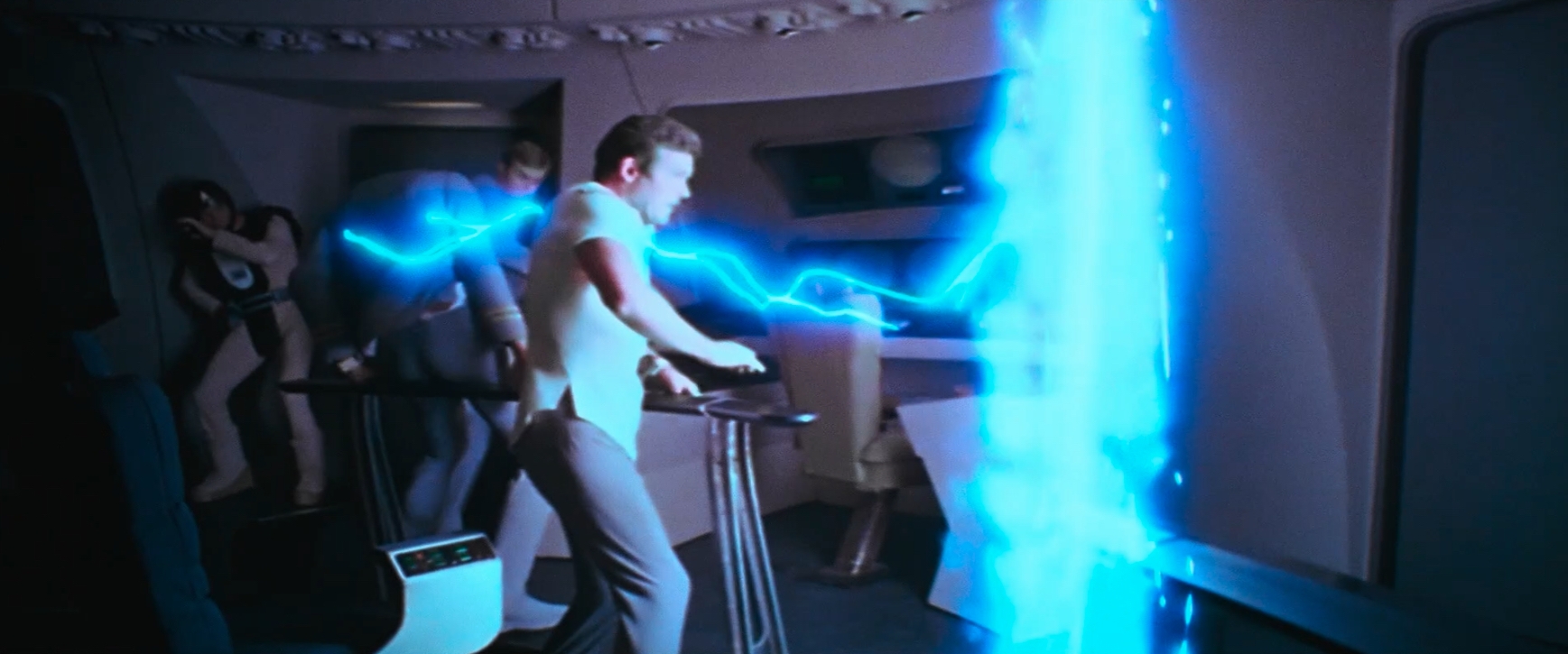
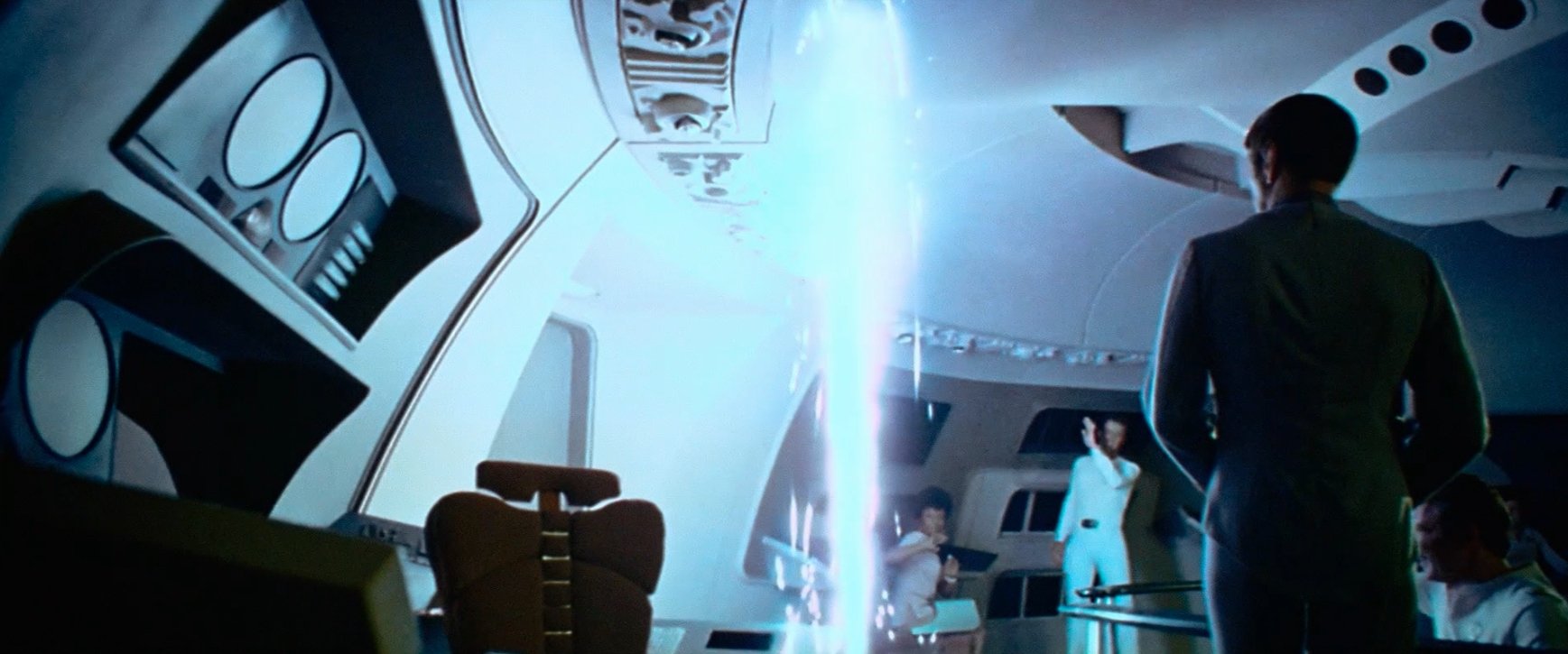
And so he's shooting a reflection of a rear-projected image on a piece of mylar, and then behind the mylar, they ran a magnet that could pull and push the mylar so they essentially could bend and crease the image in the center where the column was and essentially took out a couple feet of the image and and got the dolly grip out of the shot. But as soon as the probe goes around the room, you see the room squeeze and collapse around that line of light, which Dykstra kind of thought was interesting because it almost looked like a black hole kind of distortion effect, like like, everything was being warped by this bright light, but that was just his solution to get rid of the dolly grip. But now you have footage that he managed to get rid of the dolly grip, but it's all a re-photographed rear projection image. So it's grainy, it's soft, it kind of works, because it's such a strange sequence and the only lighting is coming from this bright column of light, then Robert Swarthe, the animator, had to go in and put a moiré pattern animation effect, where that bright column of light was to make it look more like a alien probe. And then they added the lightning bolt effects, too, on top of that. When they restored this recently, I was listening to the commentary and I think [Star Trek: The Motion Picture Director's Cut associate producer and visual effects supervisor Daren] Dochterman was desperate to find the original live-action footage because obviously now, if they had the original negative, they could easily erase the dolly grip without having to rear project the footage but they could not find the original production negative for this particular sequence. So even now, it's still a cleaned-up 35mm re-photographed rear-projection image.
David Williams: That's crazy. I'd never imagined that that was the process by which they did it. Where did you come across that information?
M. David Mullen: It's in the Cinefex article. The very first issue of Cinefex, issue number one, which I got as a teenager in 1979 right after Star Trek came out, was with an interview with Douglas Trumbull. And then issue number two was interview with John Dykstra, and then somewhere around issue eight or so was an interview with Robert Swarthe about doing the animation effects of the film. So that's, you know, as a young person, I originally thought I might go into visual effects. I did a lot of reading of Cinefex and books on on effects, and this film was a particular teaching ground I think for for optical animation compositing and things because Dykstra did all his model work with bluescreen, and Trumbull did all his model work with frontlit-backlit matte process. Because the Enterprise was a shiny object, they couldn't use a bluescreen. So instead they shot it in silhouette and motion control: they would shoot a beauty pass against black and then they'd shoot another pass in silhouette against white, but even that had matte problems with it, and they had to do rotoscope work or sometimes they covered the whole model with white tape and shot it again against black to get a you know, trying to get a high-con matte of the of the of the model and basically so they could then composite a background into it. And that required multiple motion control passes on the model. But just understanding, reading those articles, trying to in my head to understand what an optical printer composite was that involved a you know, essentially a negative and positive matte, high-contrast matte of the image because essentially, you're... The way you composited an image over another image back back then is the foreground image, you, both elements, let's say were on an original camera negative. Now you make an interpositive of those images and you load them into a projector side of an optical printer. What you want to do is re-photograph both so that they don't ghost over each other. So essentially, you have to hold out part of the image as you rephotograph it, so you have the foreground, let's say, and from that it was shot against bluescreen or whitescreen or whatever you do. You create a holdout matte, which is that object as a black shape against clear film. And you create a reverse of that, which is a black background with a clear hole where the object was. So now you have the ability to hold back everything around the object or hold back everything where the object was. So essentially, you take that foreground element, and let's say it's a person, and now you have a silhouette version of it, you take that black shape of that person and you you basically put it in front of the positive of the background, and you re-photograph that background. And now you've got the background, re-photographed on the new negative, but with a black unexposed hole, essentially where that person will go. Now you load the person, and you put the opposite, you put a black shape around them, so they only expose in that hole that that's been left for them on the negative, and everything else is left unexposed, where you've already exposed the background. And now you can have a negative that has the background in the foreground, added together without them ghosting over each other. That's a very low-tech way describe it, but as a teenager reading these Cinefex articles and trying to understand high-con mattes and all these sorts of things, you start to understand the whole principle of how images get copied generation to generation from negative to positive to negative to positive, and what generation loss means, and all these things that are irrelevant now because now movies are digitally composited, and there's no such thing as generation loss, but...
David Williams: Now there's compression loss.
M. David Mullen: Yes, yeah. But up until, you know, 2000, when digital compositing kind of took over, it's something else cinematographers had to factor in. Is my shot going to be duped? Is it going to be first generation? Is it going to be from an interpositive or internegative? And what's going to happen to the image? And is it going to match the you know, the live-action footage that isn't duped. It was a problem for credit sequences, it was a problem for optical fades and dissolves and lap dissolves. It was just something you had to live with or think about.
David Williams: How do you feel that the visual style of Motion Picture was continued or not continued within the framework of the feature film franchise? Wrath of Khan looks dramatically different from this, but it's a different adventure. But...
M. David Mullen: Well, you know, you have both this change and shift in style of lighting over time where lightning has gotten softer and more source-motivated. I think the problem with the bridge set that all the early cinematographers ran into is it was not designed to light the actors from the set itself. Unlike the sets in 2001, where you have in all the consoles on the Discovery, you have a light bar at the bottom of the console that's glowing up in the actor's face. It serves no purpose other than to light the actors, so they don't have to be lit artificially with extra lighting too much. They're just lit by the consoles, and the and what appears to be fluorescent lights in the set. It's all tungsten back then, but it's meant to look like fluorescents. So, in 2001, you have sets designed to be self-illuminating, whereas the Star Trek bridge really wasn't. You have a solid ceiling set with a kind of radiator fin design where they can hide movie lights. And the same with the original Star Trek series too, it was the ceiling they lit from back then with 2Ks and 1Ks and spots. And it gives it a certain theatrical look, but it's not necessarily, doesn't feel like what a spaceship would actually be lit by. So Star Trek has never been lit in a completely documentary-style way. It's always had a somewhat theatrical look. Over the years they've tried to design more and more of the lighting into the sets, that sort of started with Star Trek: Enterprise, the TV show where they built little spots little you could see kind of MR16-type can lighting all around the bridge set designed to aim at the actors and aim at the consoles and sort of self-illuminate a lot of the actors at times so that they're actually lit by the set. But in this case with the Enterprise bridge in the original series and in the [original] movie series, you had to do a lot of lighting yourself from off-camera.
David Williams: Was that just the thought process back then of the division between departments as well?
M. David Mullen: Well, you know, I think in 2001, you had specifically a director, Stanley Kubrick, wanting sort of the ultimate in realism and having a photographic background himself, liking to design lighting into the sets. That wasn't the norm necessarily for movies. So I think Star Trek is more traditionally art directed where the art director will put in things that you say, Well, you could motivate light from this or that, but it's not really doing the actual work of lighting. In fact, I remember articles on Star Trek IV, where Don Peterman [ASC] talked about how he would actually move parts of the consoles of the of the Klingon bridge, and then later when the Enterprise shows up the end where if anything was off-camera, he would remove the console and put fluorescent tubes and diffusion so that the actors would be lit by the glow from the console. If it was off-camera. Now you would try to design the console to do it naturally, so you could photograph it and photograph the actor at the same time. But they just didn't do that for Star Trek. So they're forced to light from off-camera. In the case of the original movie, Kline does an interesting mix of soft bounce lighting, and hard key lighting, it's kind of his style at the time, it was kind of a lot of the close-ups are lit with the light bounced into card. So it's got a nice, semi-soft key light, not hard, but then he'll fill with a hard little eye light, he often handheld a little Inky light in his, and he would walk near the lens and try to get the actors' eyes lit with that.

But there are other shots in this where it's clearly a harder light with topper flags and cutters to create shadows and spots and things to create mood. Which you know, you're not sure what would be doing that in real life. It's just it's there for atmospheric effect. Then in Star Trek II, I think Gayne Rescher [ASC] did similar things, but in that case, he was working with the first Fuji high-speed film so he could work at lower light levels, and he they replaced all the 16mm screens with CRT screens. So he didn't have to light just to balance the screens, the screens are brighter, the film stock was faster, they didn't have to use split diopters anymore to get a decent depth of field...
David Williams: Did they also shoot that anamorphic?
M. David Mullen: All the Star Trek films are anamorphic except for VI, which Hiro Narita [ASC] shot, but, you know, Gayne Rescher had just a different style of lighting — they wanted more color, like the original series more, you know, red lights for for scenes. And I think the film that takes it to the most extreme is Star Trek III that I think Charles Correll shot. They deliberately — he, and Leonard Nimoy directing — wanted to have a callback to the original series by the use of colored gels on the Enterprise sets. Although in the original series, they never really lit faces with colored lighting, because that just wasn't considered, you know, proper back then. Skin tones had to be kind of always protected, so a lot of the colored lighting the original show is always in the background walls and things but but in Star Trek III, you see the whole bridge go deep blue when they you know at some point, or deep red and other points they they really went strong with color gels and Star Trek III. Star Trek I, there is some colored lighting, but it's not dominant. The background of the corridors in engineering has that deep blue look. There are some emergency red lighting that comes up briefly and then fades back to white.
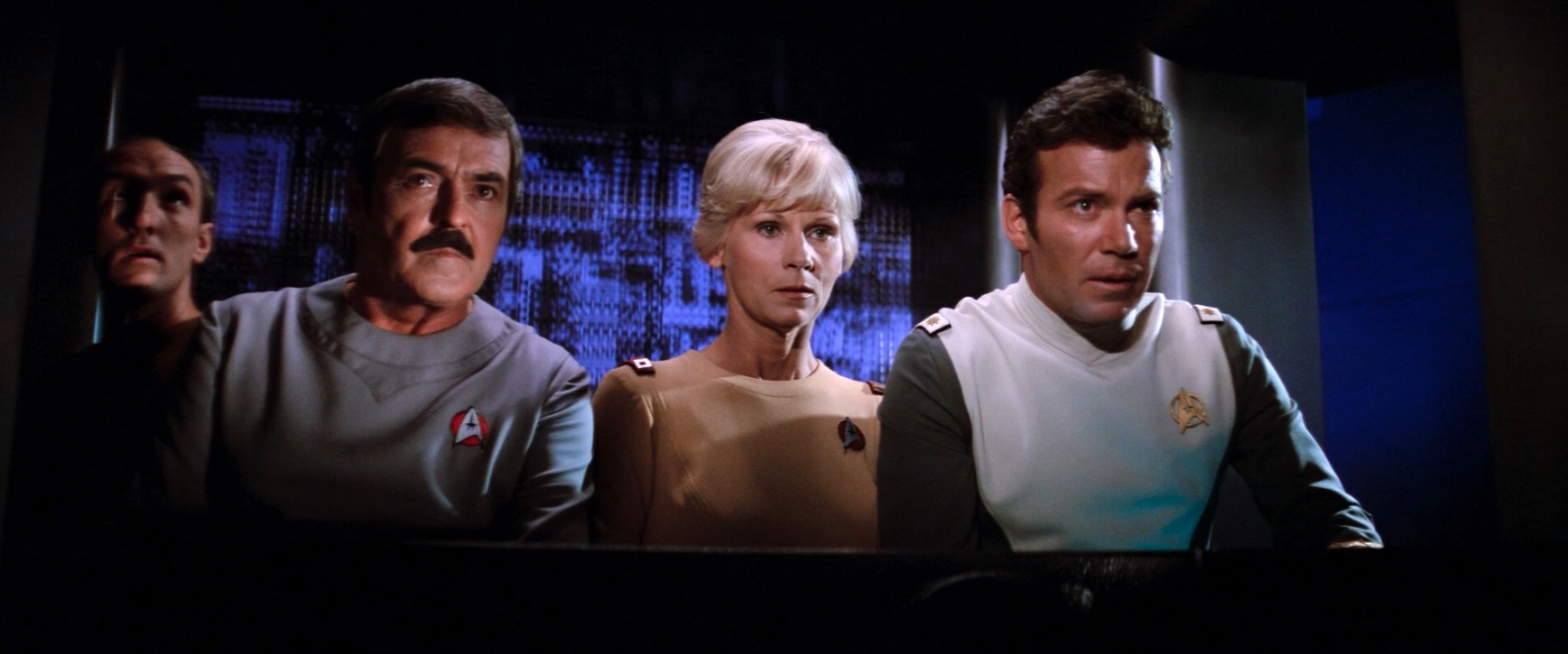
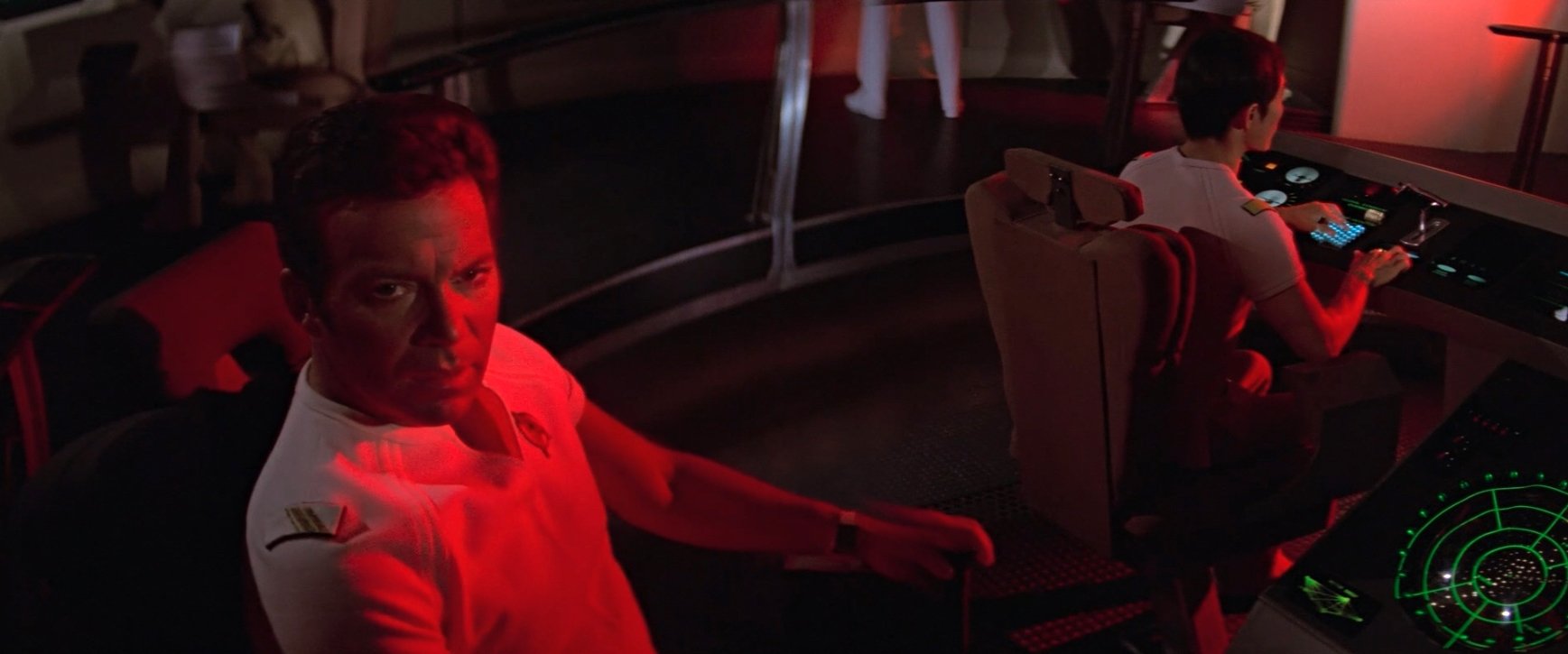
There's some interactive lighting when they go through V'ger where V'ger is projecting some sort of flashing effects. So Richard Klein is doing some strobe flashing on the actor's face. It's interesting because I suspect he would have done more of that, but he had no idea what was going to be created later by Trumbull.
David Williams: Or Abel.
M. David Mullen: Or Abel. It's interesting just to see the stylistic progression over the first few features, as the film stocks got faster and faster they you know, Star Trek III, I think he pushed the high-speed film a stop and lit everything to like a 5.6, the whole deep-focus... Star Trek V, shot by Andrew Laszlo [ASC], there are a couple split-diopter shots in there, like just two or three. But for the most part...
David Williams: Out of need, not for some specific style.
M. David Mullen: Well, that wasn't the style of the overall movie, it was just a specific shot where they wanted that dramatic effect of a split-diopter shot, where as opposed to in Star Trek I, it wasn't so much so they were trying to do some sort of arty split diopter look like you see in a Brian De Palma film like Blow Out [shot by Vilmos Zsigmond, ASC, HSC] or something where he's going for a very graphic stylized effect with the split diopter shots. In Star Trek [TMP], it was just to create a feeling of deep focus. You know at times, it's dramatic because someone the foreground is big in the frame and someone in the background is far but there are times when they use it when you wouldn't really need to use it like an over the shoulder shot where the back of Decker's head or Shatner's head is in focus, you know, like his ear lobe is in focus with the split doctor, or on the bridge, or some minor crew member...

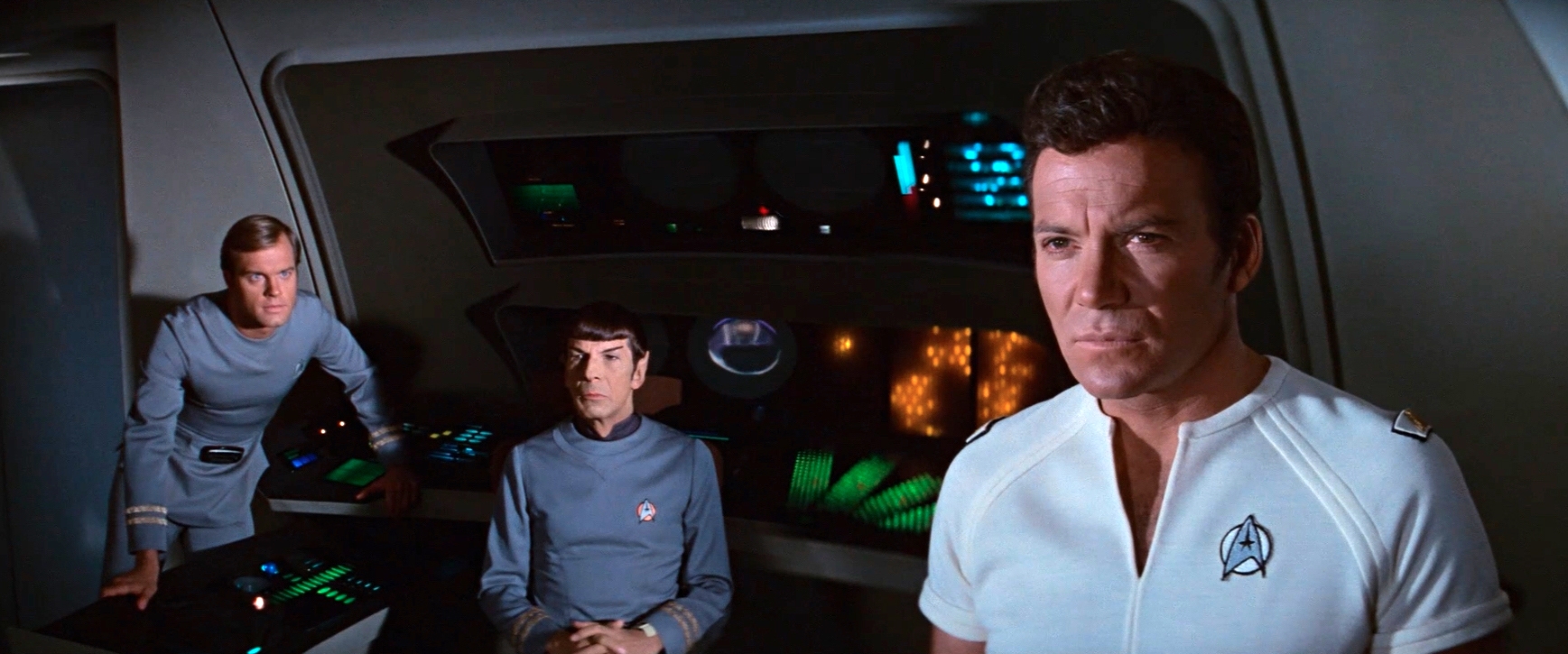
David Williams: I was exactly thinking of that. Yeah, arms crossed, looking askance at Kirk as he's dressing down Decker or something.
M. David Mullen: Yeah, and those shots don't quite work. I think part of the problem on the bridge set is that split diopter often causes any horizontal lines to be broken by this vertical split of the filter, and the bridge set has this railing that goes around the whole circle. So every time this split diopter comes in, the rail gets split or broken visually. There are other sets in this film where you can't see the split diopter at all, because the set has vertical lines in it, and the diopter lines up perfectly with them, and it's a very invisible effect. But on the bridge set, there are shots where you can clearly see because all the horizontal lines in the design of the set are being split by the filter. But I think when it does work, it works very well. It allows the actors to sort of play off each other without having a focus shift back and forth, or ping pong the focus for the dialogue, you have multiple people reacting to the same thing like the V'ger moments.
David Williams: But when you're creating split-diopter shots, like that, very complex shots, you're also having to hem the actors in, they can't really move around a lot. Can that be difficult as a cinematographer to work with the actors and try and get them on board with what you have to do visually?
M. David Mullen: Well, I think it depends on why you're using the split diopter but in this case, luckily or not, the actors are stuck in their spots there. Kirk's in his chair, everyone's in a chair, essentially. So when those scenes happen, it's kind of easy in some ways to put in a split diopter, since no one's getting out of their chair. It seems people are more free to move around when you have to design when you're going to use the split diopter and how you're going to get it, and cut to it or somehow slide it into frame. There's an interesting split-diopter shot in All the President's Men where the camera. It's very tricky, the camera pans Robert Redford off the street and into a phone booth. And then it pans like left to right and he goes around and then he goes to the door phone booth and depends back left and he lands. And when he lands, on the left side, you can see the Executive Office building and focus. It doesn't... The split diopter is not meant to say something specific. It's just there to create a feeling of unease that, is he being listened to while we're gonna have this famous government building in the background and focus while he's in this conversation, to give the paranoid feeling that anyone could be listening on this phone call. But because the shot pans into the phone booth and lands, at some point that split diopter had to be slid manually into the frame, just as the camera pans back left again, as he goes to the door of the phone booth. It's seamless; you don't notice it. And so it's an interesting use of the split diopter in that film. There's a couple split-diopter shots in that movie.
David Williams: In the newsroom with the famous shot with television and Nixon's speech, etc.
M. David Mullen: So in Star Trek, there's some unusual split-diopter shots, there's on the bridge, when they're leaving the dry dock... There's the obvious one where Sulu's in the foreground and Kirk is in the background. But there's also a three-shot of Ilia, Sulu, and Kirk where they've got a split diopter only covering the left and right third, and it's clear in the center. And then they cut to a side angle with Sulu in the foreground. Now they have to put a special diopter that only covers Sulu, and it's clear on Kirk. But then a minute later, there's a similar composition, and it's done just by using more light and stopping down. It might have been because Sulu's arms are extended, they didn't want the diopter to go through his arms or... The split diopter shot before, it was more of a moderately wide lens, like a 50mm or a 65mm. But then this other shot is wider, like a 40mm.
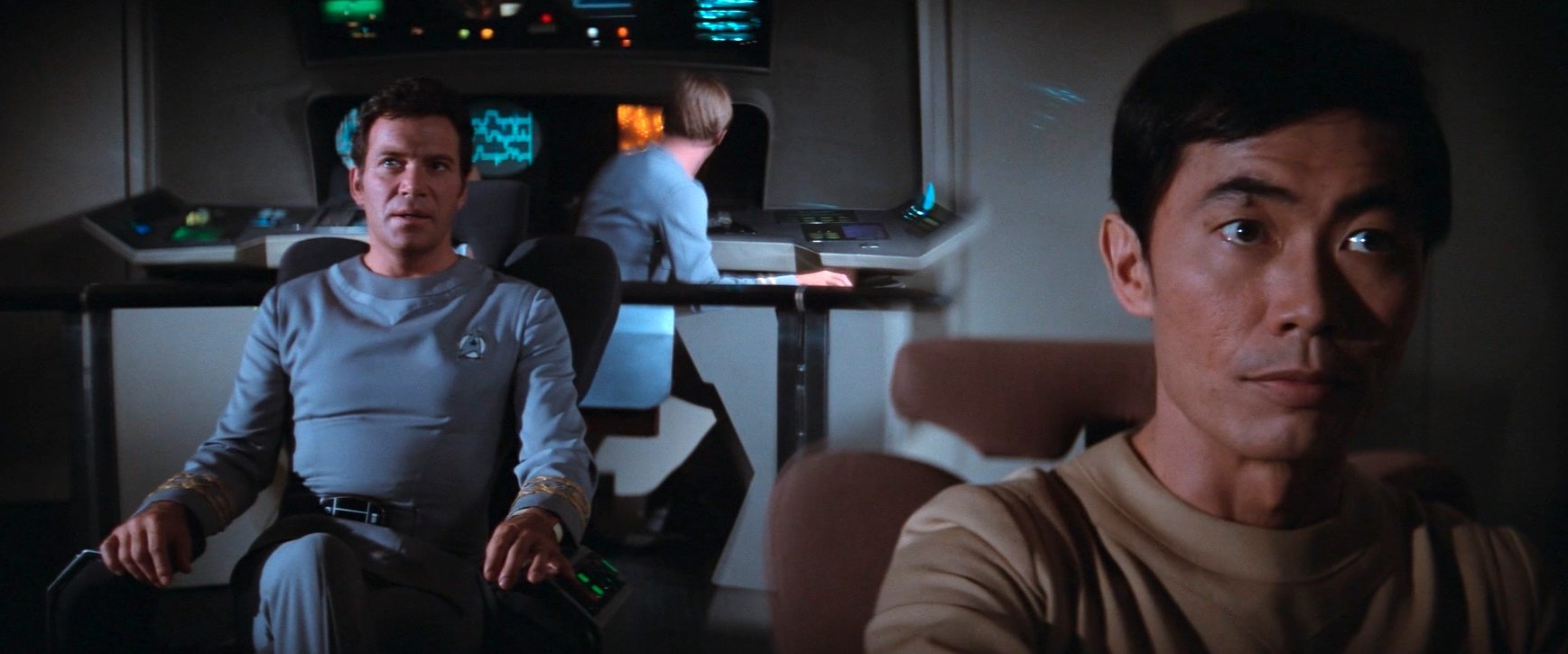
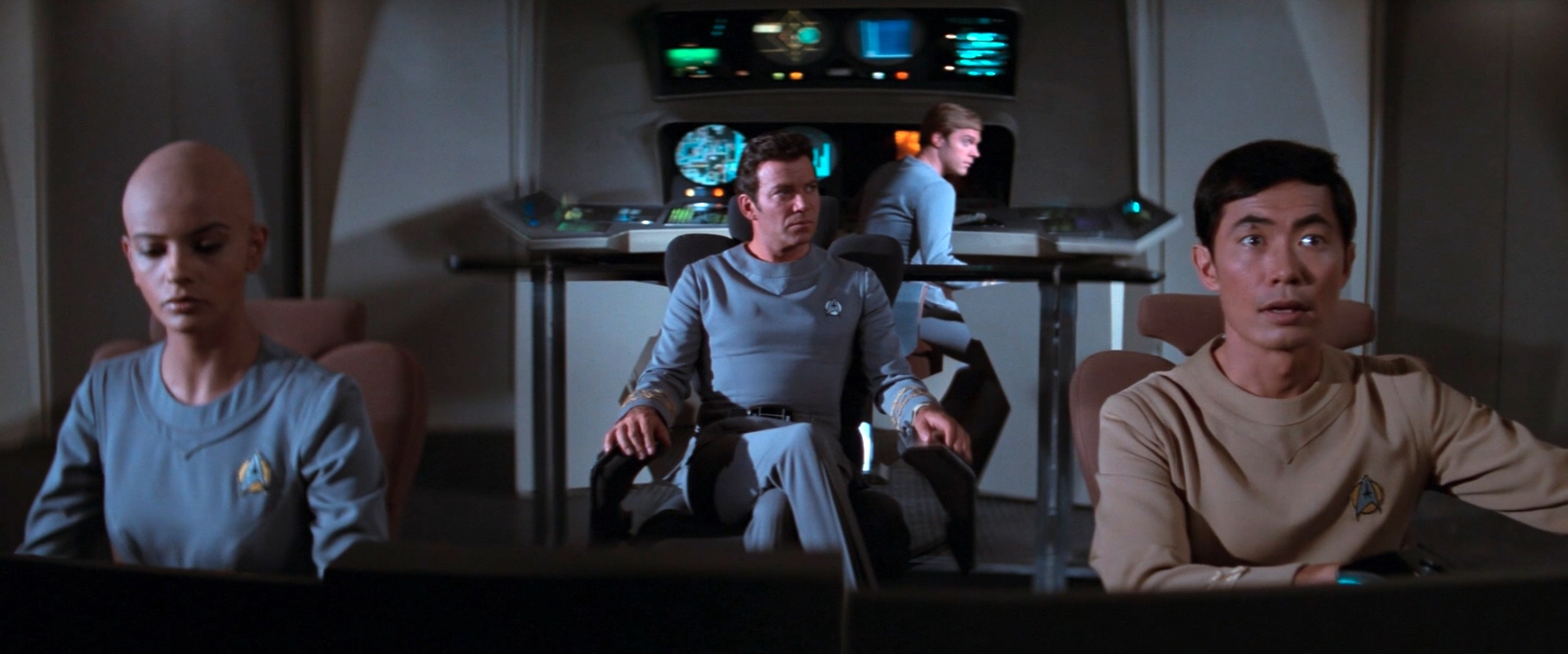
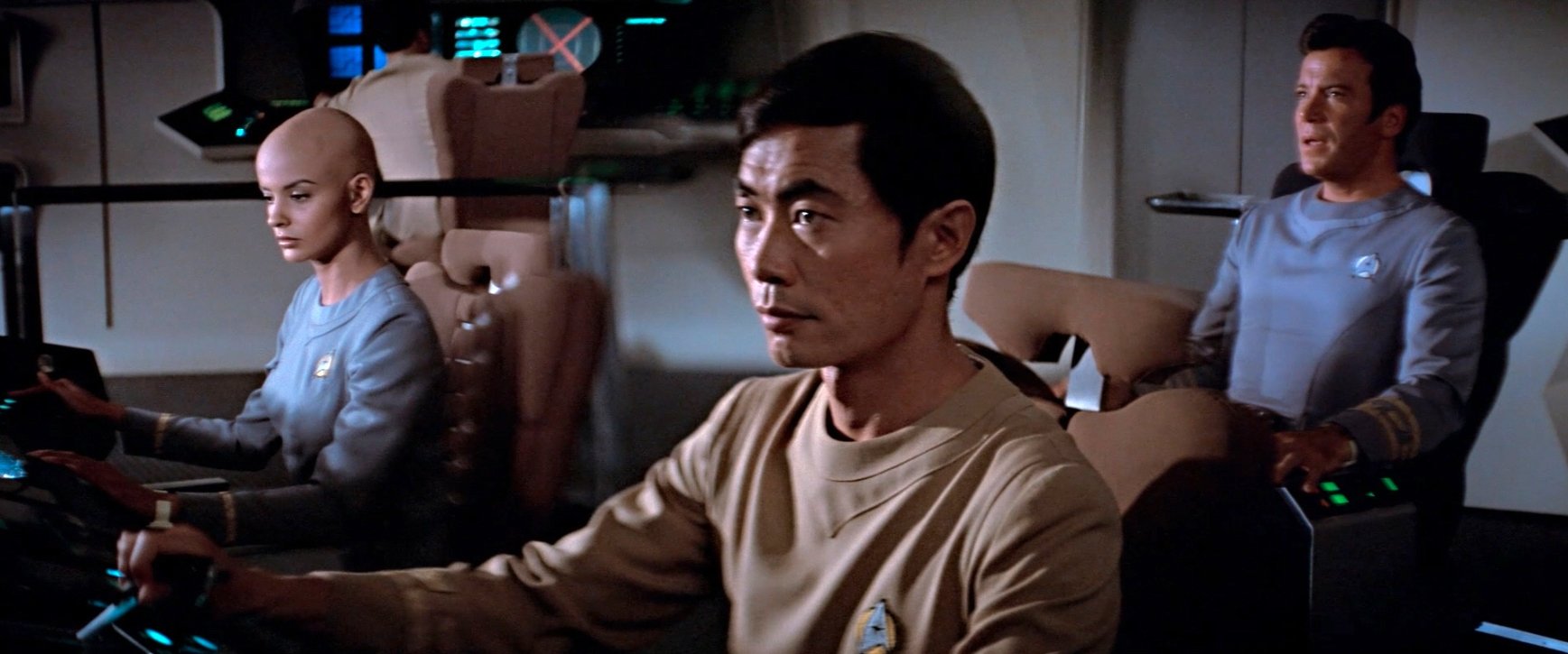
David Williams: We're looking at some very specific shots from a bridge sequence and we're going to post them up in the episode notes. There's a number of shots on the bridge that are very unusual. And I've never seen them in any other Star Trek film. And we're actually looking at one of them now — we'll reproduce it in the notes — and it's a shot of Kirk in his command chair. It's an overhead shot.
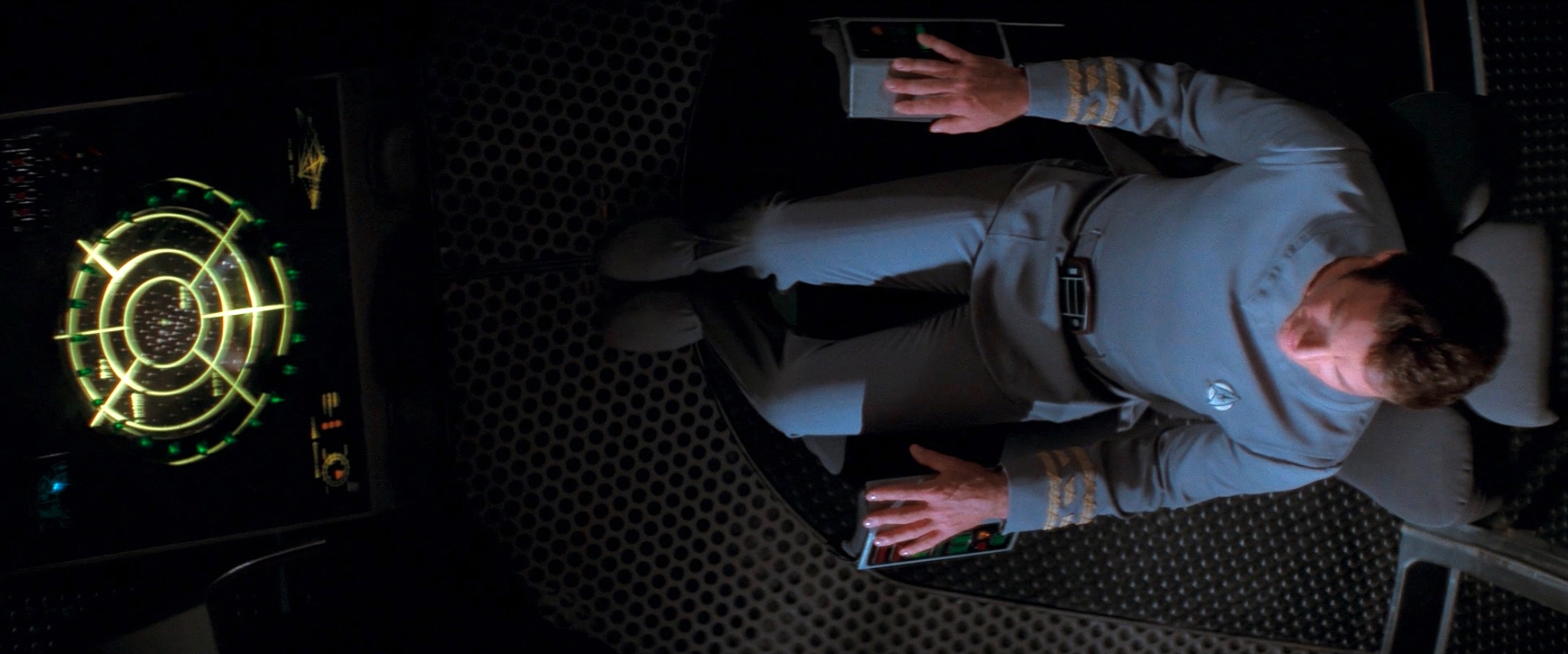
M. David Mullen: It is unusual, but there is an overhead shot in the original Star Trek. It's either the second pilot, "Where No Man Has Gone Before" or "The Corbomite Maneuver," but it's a very early episode where the director went way up in the air, and I think he zoomed in and out a little bit but it was almost over the bridge, looking down on the bridge and he started on the console I think, and zooms out wide or something like that. But they never did it again after that. There's a lot of tricky shots in the early TV show, like in the second pilot "Where No Man Has Gone Before." They did something they didn't try again until they did Star Trek [(2009)] with J.J. Abrams, where without a cut they went into the Enterprise turbolift on one level and then came out, the doors open, and they're on the bridge of the Enterprise. They did that in "Where No Man Has Gone Before" by doing an overhead shot of [actor] Gary Marshall hopping through the doors of the turbolift. And then the camera booms down to eye level. And when the doors reopen, you see the bridge of the Enterprise. And then the camera tracks through the doors. And you almost see off the set as it's tracking forward on the ceiling. The original Star Trek directors tried to do these shots, but the original series constantly went over schedule, they were almost always a day or day and a half over schedule, and drove the network crazy. By the time they got to the third season and NBC took over from Desilu, they pretty much weren't allowed to go over schedule anymore.
David Williams: And all the shows became simpler and simpler and less experimental.
M. David Mullen: Yeah and directors that went over schedule didn't get asked back, essentially. So a lot of the interesting directors in the first season unfortunately didn't come back after a while because they just couldn't do the show in the, I think it was five, six days allotted per episode, which is tight, you know, for an hour-long show.
David Williams: There was a little bit more embracing of like kind of a psychedelia in the third season.
M. David Mullen: Yeah. And camera movement was very hard on this set, because they made the decision that the bridge set would be a solid piece of set, the only way to get onto it is either through the elevator doors or you actually had to step through the screen. The screen was since it was not a real screen. Essentially it was a door onto the set. But that meant all the camera moves, the dolly moves all had to be done within the bridge set itself, which was very difficult because it's a multi-tiered set with a railing and it's complicated to do any kind of camera moves. They tried things like overhead rails, they tried dolly track on the deck. When they finally got to Star Trek II and [director] Nicholas Meyer took over, the first thing he had them do was chainsaw the set into pie slices so they could actually get a real crane in there. And then when he did Star Trek VI, he used the Steadicam on the bridge which is something Shatner had started on Star Trek V. But Star Trek I, they didn't have that option. And there was a shot that I think in the commentary track, it was Dochterman or someone was saying that it was almost that floating handheld shot, where it lands on Spock. It's a scene where he turns around and reveals he's crying. It just starts out panning around everyone on the bridge and lands on Spock's back. It's not a handheld shot. To me, what it is, is it's a dolly move done on the upper deck of the bridge, but because they're stuck putting a piece of curved track on to match the curve of the bridge and they're trying, on a long lens, to pan from face, to face, to face, essentially the camera operator is having to do a lot of what you call back-panning, since the camera's sliding one way, but to keep someone centered, he's having actually correct out the drift on the dolly move. And so it ends up making the shot look like it's shaking or floating around when it's actually just the operator trying to be steady while the dolly is moving, but hold on one person, go to the next person then go to the next person, and finally land on Spock's back. But later Star Trek, they solved it by splitting up the bridge, which is how the original series was done. There were, there are camera angles constantly in the original series, where you can see that they've cut away- You know, there's a lot of shots of Spock and his viewer with Kirk in the background where the camera is in a camera port. Essentially, they pulled the console away that's to the left of Spock, and you can see the actual missing end of the console. They tape black card on it so it's just the black shape, but it's clearly not continuous set.
David Williams: Back in the day, in NTSC, CRT you're not gonna see any of that.
M. David Mullen: Yeah. One of the oddest things about the original show that someone has pointed out that I didn't notice as a kid was that because every time you shot Chekov and Sulu at their console from Kirk's point of view, you had the viewscreen in the background, but they couldn't always afford to put a background in that screen. So they actually sometimes took that console and turned it sideways, so they wouldn't have the screen in the background. So you actually have shots sometimes of Sulu or checkoff from Kirk's point of view, where the background is clearly been shifted way over to get the screen out of the frames because they couldn't put a background and that screen.
David Williams: Right they couldn't afford, either in terms of cost or time, to have Lin Dunn [ASC] or someone else drop that in.
M. David Mullen: They just took chairs and the helm console and turned it like 45 degrees, so they could then not shoot towards the screen, which looks very odd if, you know, if you actually notice it, but I never noticed. Now that people show me stills, though...
David Williams: Now you can't unsee it!
M. David Mullen: It's like the shots in the old show where they used to flip shots because they were missing a close-up. So, they would... It's the wrong screen direction, so they would take a shot and flop it, but now Kirk's badge is on the wrong side of his chest, and his hair is parted on the wrong side of his head, and things like that.
David Williams: There's the great sequence where Kirk comes down into the engine room and talks with Scotty about getting the warp drive online, and there's that beautiful set piece that was created by Sam Nicholson [ASC] for the whole warp core. Do you know much about that?
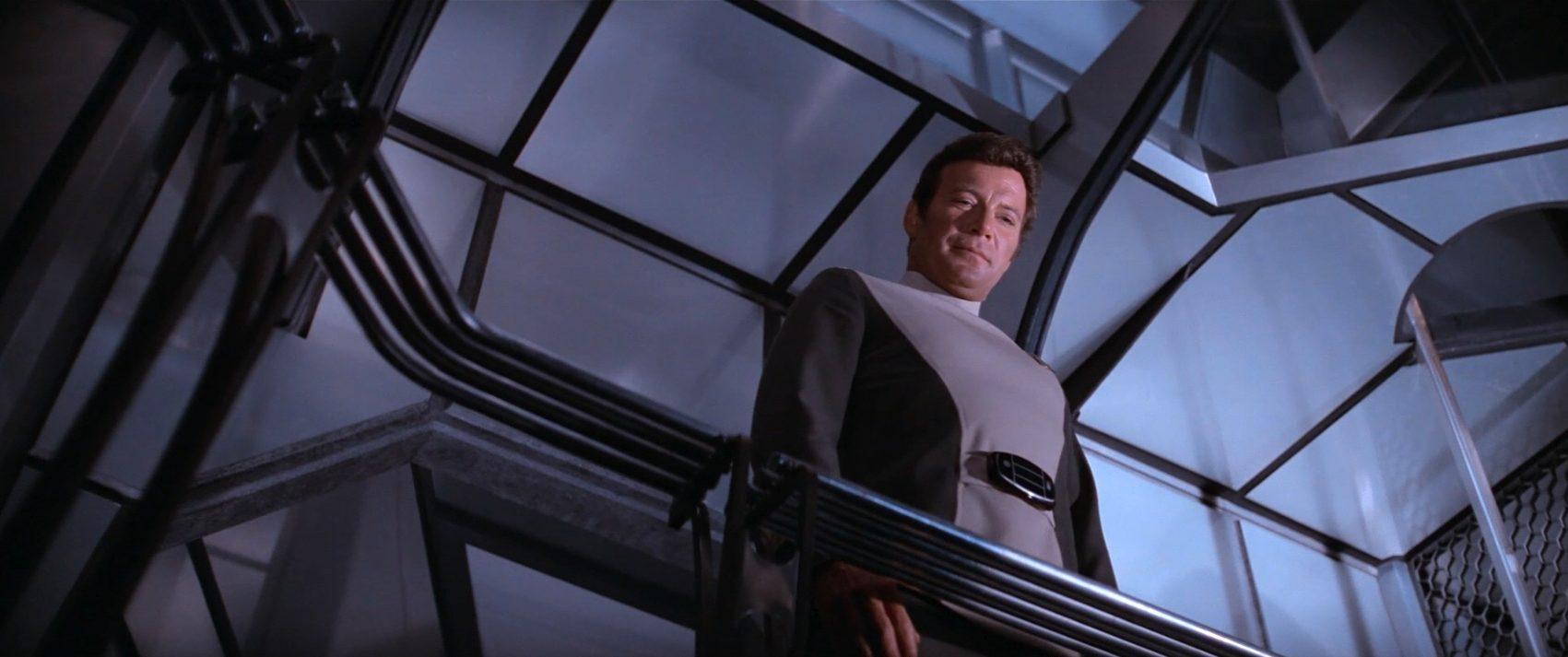
M. David Mullen: It's an amazing bit of old-fashioned art direction. There's a high-angle point of view shot looking down the warp core, which is just a forced perspective painting on the floor of the soundstage, below the set, and it lines up almost perfectly. It's all in-camera, and it's just old-fashioned, false perspective painting. And then the warp core effect itself was an interactive lighting gag that Sam Nicholson [ASC] did, using rotating mylar mirrors and lights bounced into them, and then reflecting onto things. I'm not sure how it was rigged. It's very well done. I feel like the later movies never got as good as the first film. You know, they've essentially simplified it. By the time they get to Next Generation and other shows, they're just doing a pulsing light that goes up and down the column. But in this film, it looks like a shimmering, gassy kind of...
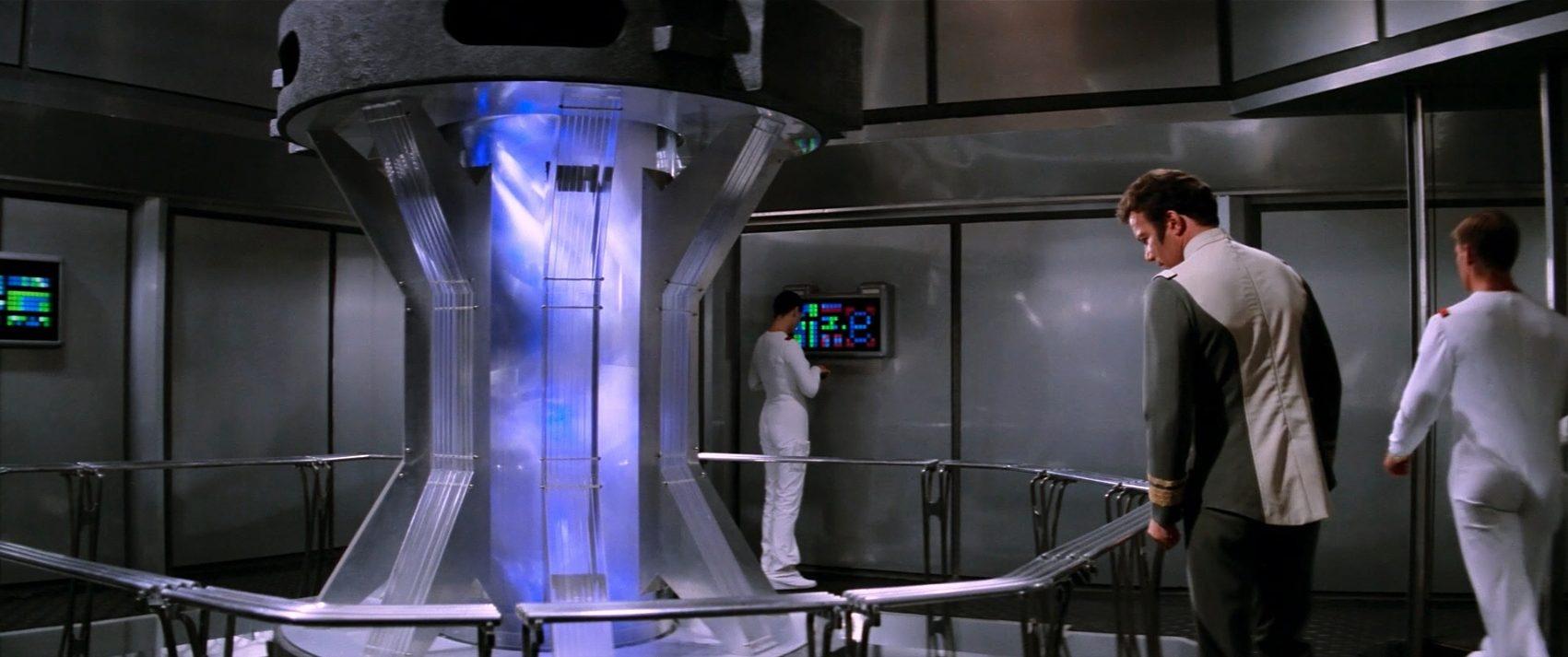
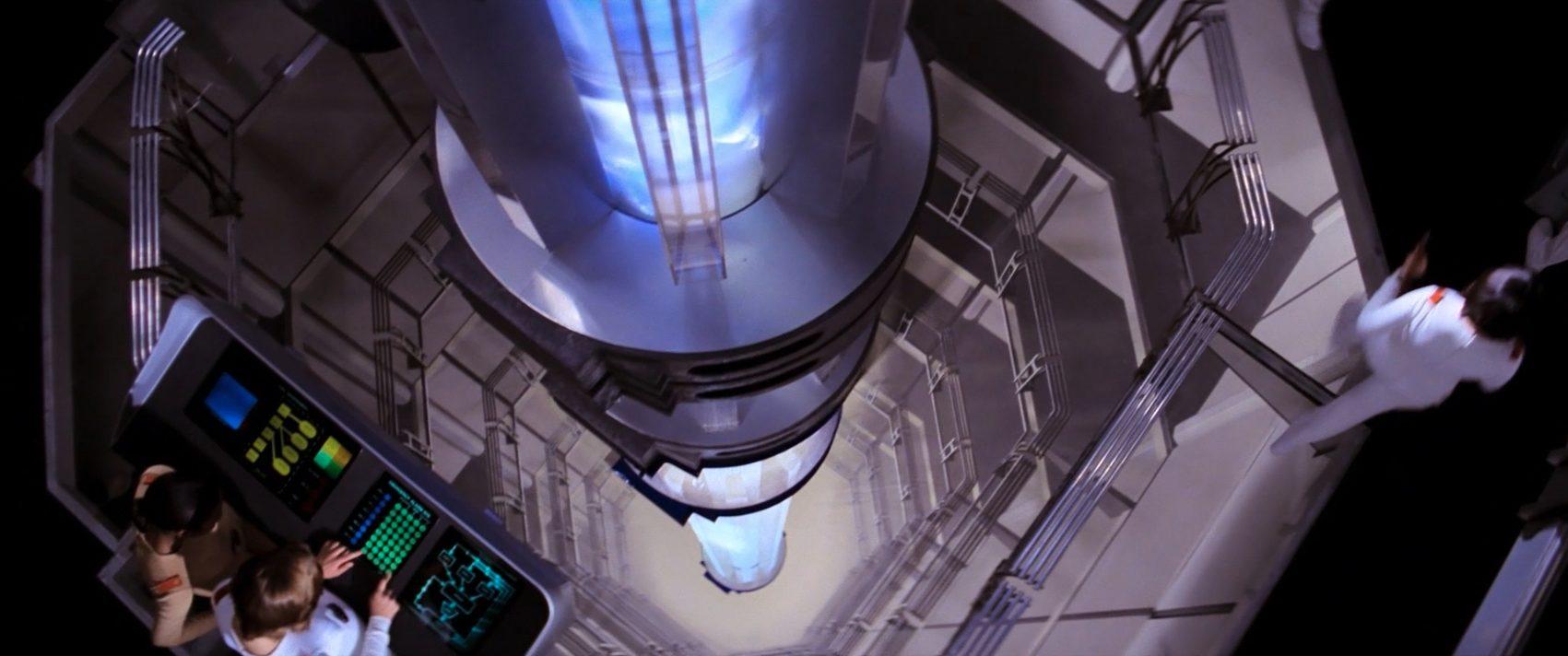
David Williams: Something organic.
M. David Mullen: Yeah, it's very, very organic and hard to figure out how they did it. It doesn't look like just a bunch of neon tubes going up and down like a Next Generation thing. So it's very impressive, and he also did the interactive lighting at the end of the film, when they get to V'ger. It's very well done, you should interview Sam sometime and ask him about it. I'm sure they were, it was mechanically, you know, the stagecraft essentially, some sort of rotating mirror.
David Williams: I know a little bit about it, if only because Sam was getting an award from the ASC this year, the Curtis Clark Technical Achievement Award, and we did a little bit of an interview with him. And we did discuss that, and you know, his background in terms of being a creative person was in creating glass sculpture and glassblowing. So he was doing that, while a student. And he was recommended by some of the faculty at his school, they had heard about this technical issue, this set-piece issue on Star Trek, and they recommended him because he was starting to do light sculptures with blown glass globes. And so he showed like a little model of some of the things he was doing, and they said, “Oh, that's really interesting kid, here's some money, make something bigger.” And so he came back with an 8'-tall demo mock-up of what he thought it worked or could look like. And they loved it. And so they contracted him to build something that would ultimately be a 60'-long sculpture of rotating glass balls and mylar as you're describing, and what Sam described as "light guns," which I'm not exactly sure what those are, you know, back in back in the ’70s, what those would have been. But it really was very much an art piece, and that's what launched his entire career in visual effects.
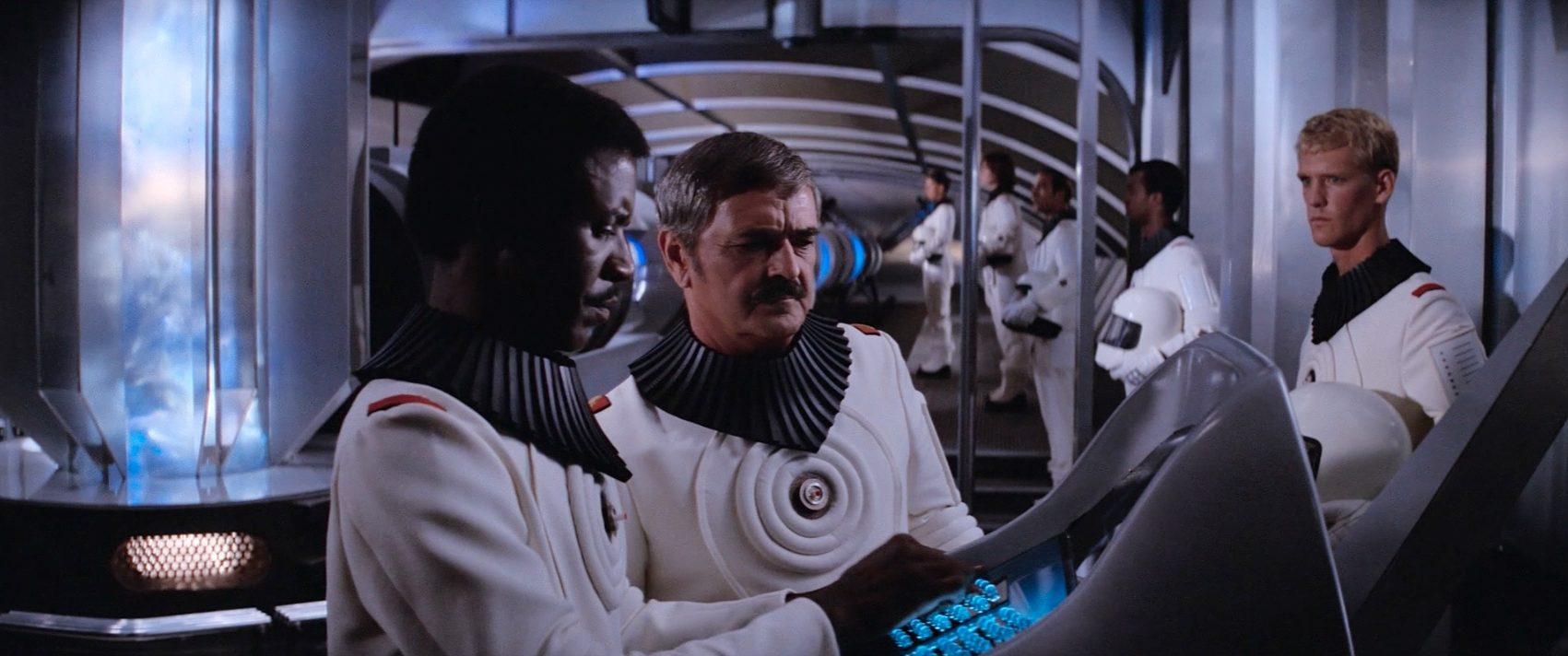
M. David Mullen: Well, also the engineering deck also has a vanishing perspective, you know, horizontals too. The long horizontal warp core is a receding set piece that gets smaller and smaller, where they put smaller and smaller actors in the background. Just like in Alien when they used kids to play the astronauts at the base of the spaceship on the alien landscape, here they used small actors. And that's something that Harold Michelson liked to do a lot to the point where Mel Brooks made fun of it in History of the World: Part I where he built a French, you know, Versailles set with the receding perspective corridor. And Mel Brooks as King Louis runs down that corridor, and gets to the end of it, and he's now huge, and it's a tiny end of the set, and he goes, “What the hell is going on here?”
David Williams: Well, in terms of you know, visually, the film is like... There are a lot of standout sequences that are mostly I would attribute to the work that Trumbull and Dykstra gave to the picture. I mean, their visual effects work is still top-notch, but, photographically, what Richard Klein did on set, what's a particular scene that still stands out to you and you think is well-executed?
M. David Mullen: There's a number of really nicely lit close-ups scattered throughout the whole film. And for the most part, the film is shot clean, but there clearly is some very light diffusion on some of the close-ups to make Deckard and Ilia look more romantic. And then nicely bounce-lit with some of the soft key that sticks out a little bit, but it's a very nice portrait lighting he does on the bridge. I think the climax, Trumbull told them that they should do the ending of the film all with visual effects and they just didn't have time or budget and they'd sort of set themselves on trying to do it in camera. It's something that didn't work for the memory, what they called "the memory wall" sequence, which became the Spock spacewalk sequence. They'd shot this physical set that was supposed to be like the memory banks of the V'ger with Shatner and Nimoy on wires in spacesuits being dangled through it. And a little like Fantastic Voyage at some point, they get attacked by antibodies. It was terrible. And Trumbull said it couldn't be saved, and he proposed doing the whole Spock spacewalk as a kind of mind-blowing 2001 trip sequence and sped up and fast, which is why it's a great sequence. But the end of the film where they find V'ger, Richard Klein and Wise were determined they could do this in-camera basically, with the interactive lighting. And the whole sequence goes through this series of light cues where it goes into red lighting and other things and flashing and lightning bolt effects. And a lot of it's shot through net diffusion, partly to give it a somewhat mysterious dreamlike quality but also a trick that apparently Klein liked to do because I read about this on King Kong, he will do an in-camera effect by hitting the edge of the lens with a light. There was a sequence supposed to be lit by flares in King Kong, and they didn't really, couldn't light the whole set with military flares. So instead, he actually faded up a red light on the edge of the lens, so it would flare out the lens and fill the whole frame for a moment with light as if a flare had burned out the image. So it's all in-camera, sort of like Soylent Green, where he did a lot of the day exteriors by shooting through a tank aquarium tank with smoke. So in this case, he has a net on the front of the lens, so he could hit the edge of the lens with light, so things would glow across the frame, as if V'ger is sort of emanating and flaring through the frame, so they could do things in-camera. But to do that he needed something to catch the light, so he used a piece of netting in front of the lens, as far as I can tell. And you can see the net occasionally, if you look carefully at the way light flares, and you can see the pattern in the net. But it gives the whole sequence kind of slightly dreamlike quality plus the smoke and interactive lighting. But I think it actually works pretty well. I think if they'd done it all with visual effects, you might have lost something of the human element of the sequence, which is, is...
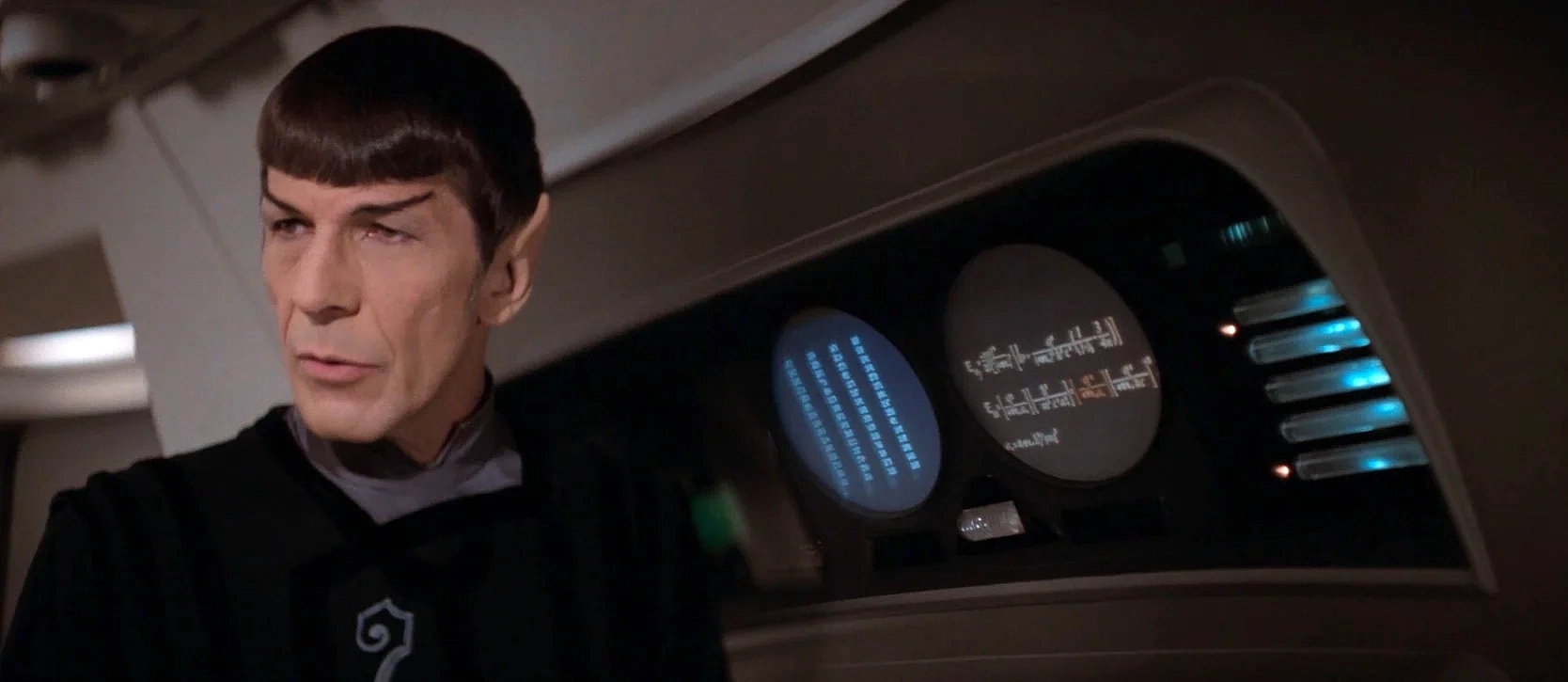
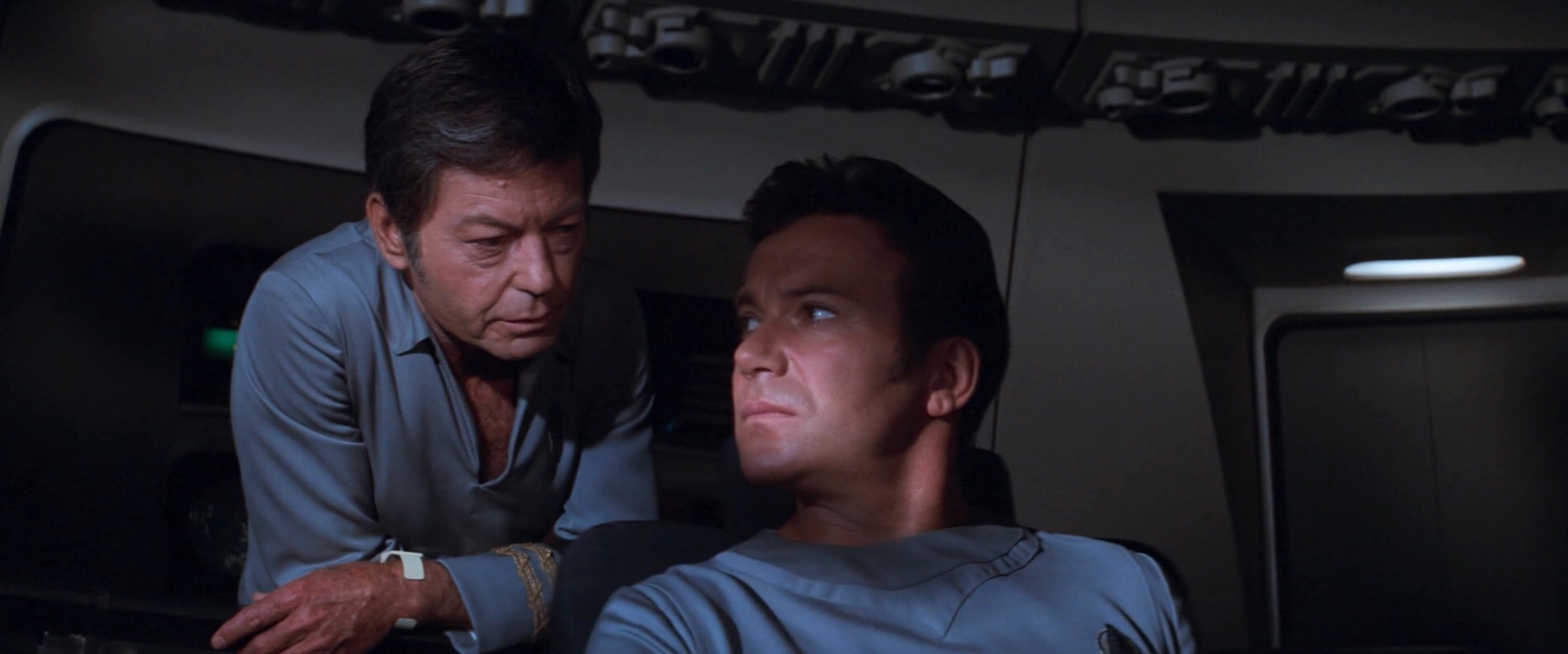
Star Trek always comes back to humanity being able to solve its problems, you know, Kirk and Spock and McCoy together, figure out the problem and solve it and do that it's really becomes an acting scene. It would have been nice to do some big visual effects sequence, but I think the fact that it all boils down to them in the small space, working the problem, I think actually works better dramatically. And the film has enough big visual effects with the trip through V'ger. And, of course, it climaxes with a big explosion and a light show. So I don't think they need to do this whole sequence in the core of V'ger as a kind of dreamlike, surreal landscape. I think it's better that it's contained with the V'ger model there, and the actors being able to act and interact with each other and talk among themselves. I think it works quite well. But I think the lighting cues, and the sound design is quite impressive, too. It's interesting that the kid who was who acted in the original TV series created, they call it "the blaster beam" or something, it was this big metal pipe that created that strange sound.
David Williams: [imitates the sound]
M. David Mullen: Yeah, that was it, the V'ger sound. And they were on the mix stage using it like a musical instrument, essentially. Goldsmith would have him play it. And then they would do different variations until something sort of worked musically. So it's also partly a musical instrument, partly a sound effect. But it works very much to become the voice of V'ger, to create an alien voice. It's also nice because it's not a synthesizer. You know, it's actually an organic thing that's creating these...
David Williams: It sounds like one of those Aboriginal Australian musical instruments.
M. David Mullen: Didgeridoo kind of thing. It was Craig Huxley, now that I'm thinking of it. I got confused with Kirk Thatcher who did some music, and he also was the punk in Star Trek IV. But I think it was Craig Huxley, who became a musician, and he did these blaster sounds for Star Trek I. You know, it's a side effect, the fact that they didn't have time to cut the film properly for preview audiences, but they gave Jerry Goldsmith just huge swaths of this movie to score without any imagery to work from, just the slug saying, you know, "V'ger here" and "effect coming" and all this sort of thing. So, it gives Goldsmith a chance to do these very impressive, scored sequences, and the movie just becomes music and visual effects, almost nothing else and you don't get many chances in movies like that. And Goldsmith was at his peak, I think, as a composer. He had come off a decade of doing kind of avant-garde music scores like Planet of the Apes and Logan's Run, and then coming back to a kind of symphonic style because of the popularity of Star Wars and John Williams. So by the ’80s, his scores got very melodic. But Star Trek represents the sort of crossover from this and Alien which he did the same year, a crossover score which is half modernist, and atonal and, and then half symphonic, and thematic and Wagnerian. It's, in fact, it finally came to pass when he did the Enterprise tour sequence, he scored that whole sequence where Kirk views the Enterprise, and when Robert Wise saw it, it was a great score, but he says, Where's the theme? And if you listen, it's on the recent soundtrack album, you can get his original piece for that. And it's a beautiful orchestral piece, but it's a series of leitmotifs that never quite get anywhere. You start to hear an Enterprise theme start and then it goes into some other beautiful, melodic kind of tonal quality, and then it goes back for another moment. And Robert Wise made him go back and rescore that whole sequence with a strong Enterprise theme, which became used throughout the movie as well as Next Generation. But that wasn't his original impulse for that sequence. The same with the leaving the drydock score too, he had to rescore that.
David Williams: But those initial pieces that were probably scored against nothing, as you described.
M. David Mullen: Yeah, just his imagination. I'm sure Wise described to him what the feeling should be: alien and mysterious. So, that's what he wrote.
David Williams: [laughs] Those were the notes. Two words. But all of that stems from, as you know we were discussing before we started recording, a film that began as a release date.
M. David Mullen: Yes, they had a release date, and they didn't have a script. And essentially, they rushed into production and then they ended up firing Abel, who's going to do the visual effects because what he had delivered by the time they finished live-action wasn't good enough and didn't convince Wise that he could pull it off. It's sort of similar, watching this documentary on Star Wars when Lucas came back from England after he finished live-action, and they'd only finished two visual effects shots for Star Wars. Now he didn't have a heart date, but they still had a deadline, they had a budget to meet and, and he was panicked. But in that case, it was just that Dykstra hadn't quite gotten the whole assembly line. Everything from the bottom up he was creating in terms of the motion control work and everything, so that whole mechanism hadn't quite gotten up to speed. But I think the fear of God was put on everyone that they really had to start showing results soon after Lucas got back from England. But in the case of Star Trek, they fired Robert Abel and hired Trumbull and Trumbull had to hire John Dykstra, because the workload was just tremendous, and the deadline to finish was so short. And that's why there's certain mistakes in the film, there's clearly sequences where there's missing sound effects or missing transitions between scenes or missing effects to transition scenes. Or there's the opening credit sequence is just black and white title cards. They're not even cross dissolves. It's hard cuts between every title card.
David Williams: It looks like a temp.
M. David Mullen: I can't imagine the hours these people worked to pull this off.
David Williams: You know, I have to give a lot of credit, though, to everyone involved in the remastering, and even Wise himself. They could have completely redone the title sequence, but they chose not to.
M. David Mullen: They put floating stars through it, and they jazzed up the lettering a little bit. And that's about it. I think that's fine. And you know, you don't have to get fancy. This music score is so great, just a star background is I think enough to make it feel finished. In some ways, the lack of time gives it an odd quality, where sequences just seem hollow, and there's no background noises. And suddenly it just feels like production track. But it does give the film a strange kind of claustrophobic feel at times, like they're really out in deep space in the middle of nowhere. But it's probably just an accident of not having time to really fill in the soundscape. I think now it just, it feels finished now that they've gone back and remixed it. It just sounds really good.
David Williams: Well, you know, [44] years after its release, as a very accomplished cinematographer yourself, what is your continuing obsession with this picture?
M. David Mullen: It's a weird mix. Besides being a Star Trek fan and just wanting to see Kirk and Spock and McCoy and all that sort of stuff and, or the space stuff, and the Enterprise bridge, it has a strange, I don't know, underwater tonal quality to it. It's got this mysterious, cold, dark, moody feeling like, it's like the whole film has a dreamlike quality to it I think especially once they get into V'ger. And 2001 has this quality too, and I could see the inspiration there. But it's just- Unlike the later films, which have a lot of warmth and energy and passion to them, this one has a kind of distant quality, which I kind of like, in a weird way, but you have to be in the mood for it. One thing, it feels like a big movie, it feels like a serious film, you know, with serious ideas behind it. And very polished in its approach. It's weirdly also claustrophobic, like 12 Angry Men, you know. It's a bottle episode, essentially. Most of it's on the bridge of the Enterprise, and they don't go to an alien planet other than stepping onto V'ger at the end of the movie.
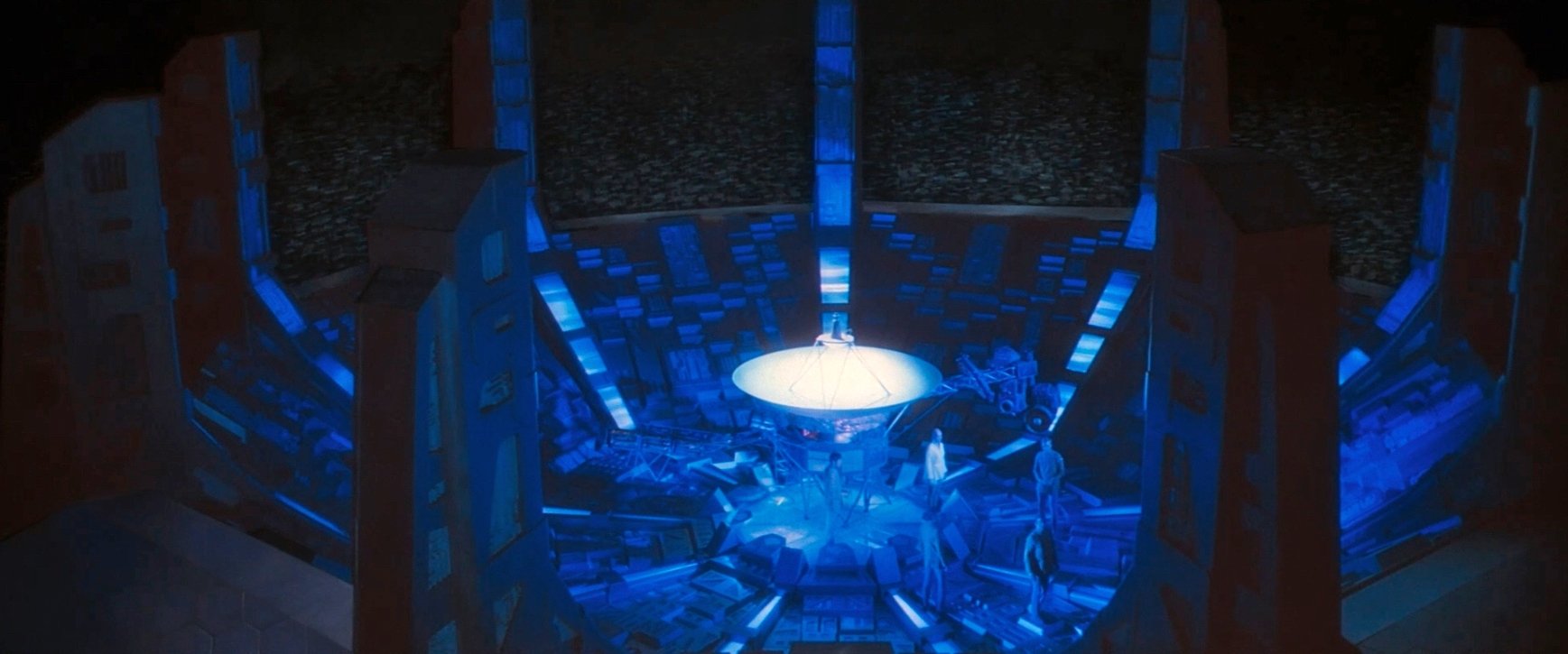
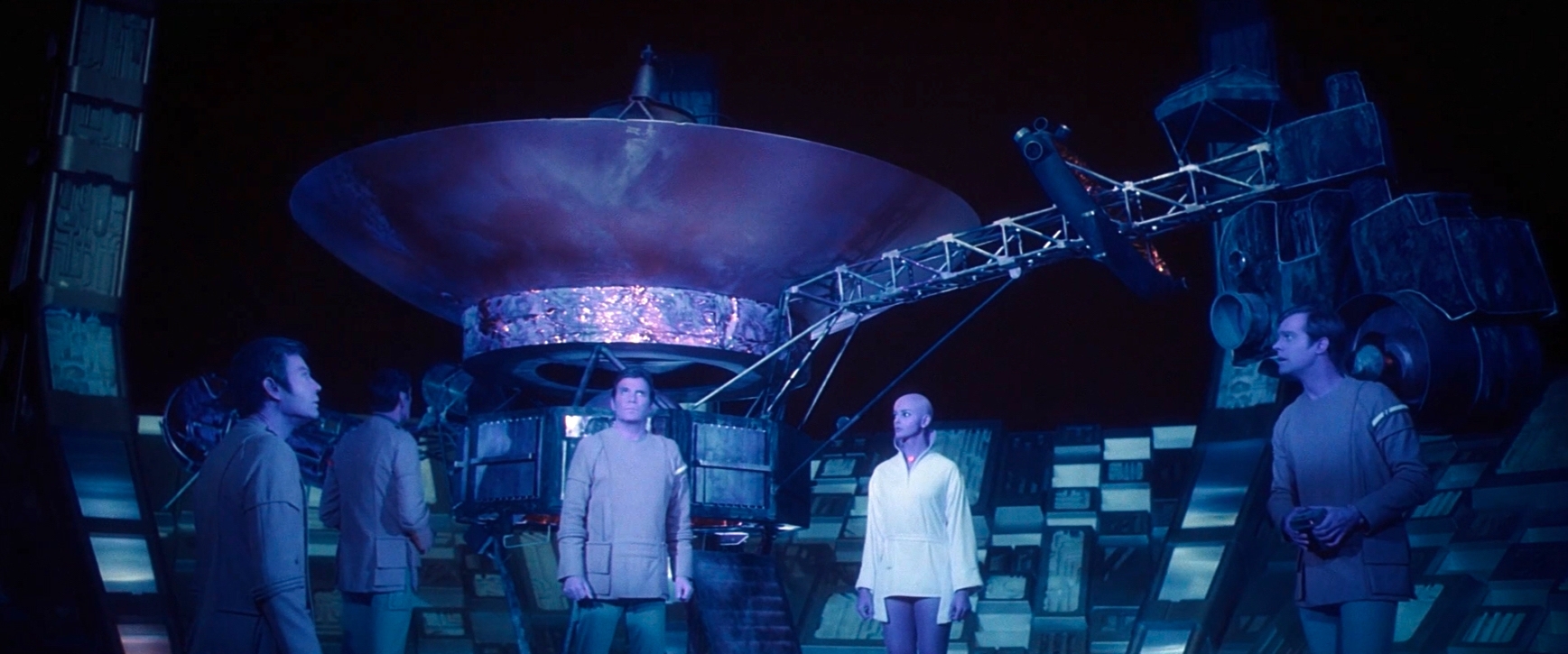
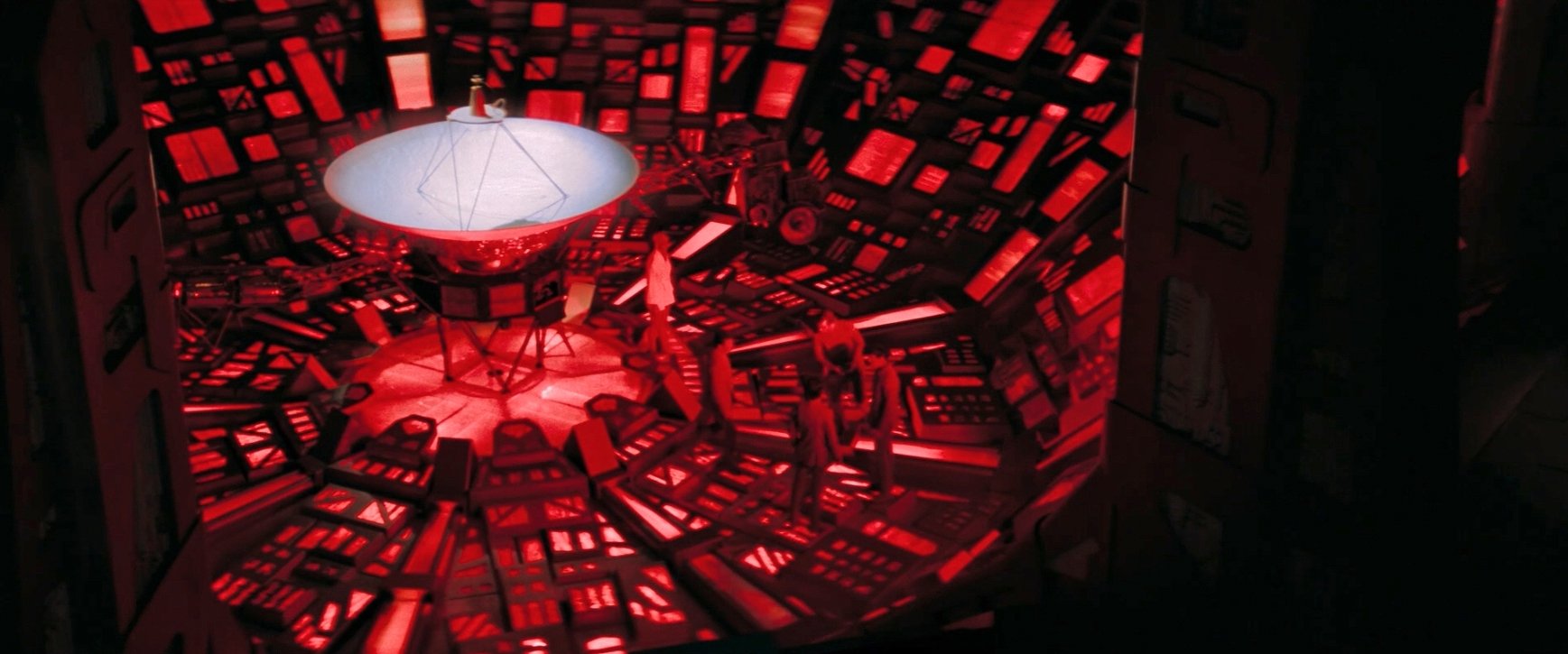
So you've got a huge chunk of this film taking place in one room with, you know, several people. I find those sort of movies interesting from a purely staging-covering-editing point of view. You know, who's in the foreground, who's in the background? When does the camera move? When does it not move? When does it rack focus? Where the emphasis is at any one point, and to do that well, you have to be a director who knows staging and dramatics well, a lot of these old time directors like Wise really understood this. You know, it's not a film that doesn't use editing. It is cut, but it's not the sort of film like today where you feel like it's five cameras rolling and the editor kind of created it in post. Every cut feels like the director and the DP said, "Okay, now we need this moment. And now we need this moment. And I'm only going to use a few frames of this moment." It's all pretty much single-camera. And I like that kind of old-fashioned craft work of just staging for the lens and working out dramatically what you want to see at any one moment, I find that just invigorating in the sense to just watch something like a piece of clockwork being executed. You know, and I often think about how, as a Star Trek fan, I would, I would have done differently with the graphics and the designing what I would have kept the same, I would have, personally, you know, even back then it pushed for a set that has more self illuminated quality, little like the Discovery was in 2001. In that film, when Bowman goes into this pod, he's just lit by the glow of the computer screens and the buttons, you know, this is 50 ASA film 65mm with a high-speed lens. But still, they designed the set to be bright enough that it can actually light the actor's face. You know.
David Williams: You feel like the set is alive. It's part of HAL, it's part of his character. But you feel like they're in an organism.
M. David Mullen: Yeah so it's possible to do that in the mid ’60s with 50 ASA film. It certainly would have been possible in the late ’70s, with 100 ASA film. Alien, for example, is a film where the set is more self-lit. You know, it was very well-designed. They tried to design it so they wouldn't have to do any lighting. But they soon found that that didn't work. But still, it benefits from the fact that the sets could be, people could just walk around them and just be lit by the console or lit by the overhead or something, and I think Star Trek would have benefited from more of that approach. But perhaps because they were inheriting sets that had been started a couple of years earlier for a TV series and they had to modify them, and perhaps the production designer wasn't as modern in terms of his approach. He was a little more old-fashioned or what, but...
David Williams: Or television versus feature film, there was a much larger division in those days.
M. David Mullen: Yeah, and it could have just been it's just trying to keep with the original Star Trek set design and not change it too much with having a lot of lighting added to it, but still, I would have tried to push for something they started to implement later. You know, like I said, Don Peterman, whenever he could on Star Trek IV would hide fluorescent tubes behind consoles and things, so people were lit more like from the buttons and the screens. And it gives those brief shots and Star Trek for a lot more believability to them and grounded quality to them. So I wish that approach had been done for Star Trek I, and it would have been possible if they had designed the set more for that. Star Trek V they rebuilt the whole bridge set and they put more lighting into the ceiling, and so it's more of a soft top-lit set. They wanted more of a soft lit high key look for Star Trek V. When they got to Star Trek VI, they had the same set but Hiro Narita and Nicholas Meyer wanted more of a submarine feeling for it, so they went for a higher contrast lighting style for the bridge set and for the set in general. It's interesting, apparently they the only reason they built a new set for Star Trek V is this one that got redressed and repainted for the end of IV when you see the Enterprise bridge was repainted all white, which probably wasn't a great idea for a whole movie, but for a one shot it was fine. But that set got left outside for a few days in the rain or something and got warped, and they had to throw it in the Dumpster. So, essentially, Howard Zimmerman I guess, had to redesign a whole new bridge set from scratch for Star Trek V. But if you look at Star Trek VI which is supposed to be the same set, Nicholas Meyer rearranged elements of the set the two elevator doors are farther apart. He replaced all the carpeting with steel deck you know he just... Star Trek V and feels more like Next Generation, it has that kind of bit of a hotel quality to it, you know, soft carpeting and soft lighting.
David Williams: I always thought of it as sort of a mall sort of feel.
M. David Mullen: And Star Trek VI, Meyers always wanted Star Trek to be more militaristic-looking, so...
David Williams: It's a harder-edged story.
M. David Mullen: He always saw it as kind of a Horatio Hornblower, Navy thing, which is something that Roddenberry had originally said Star Trek was based on, but over the years, Roddenberry's vision for Star Trek changed, and he didn't want to seem militaristic. But when Nicholas Meyer took over in Star Trek II he basically brought back all the Navy traditions, the bosun's whistles and all these sorts of things. His phrase was, Nautical, but nice.
David Williams: Now, you're talking about in terms of, you know, sort of changing away from sort of the military theme that was in regard to the original series.
M. David Mullen: Yeah.
David Williams: But look at what was happening in the world. The Vietnam War was really heating up and I'm sure they were probably not wanting to remind viewers of the military. Although Roddenberry was a veteran, he was a Marine.
M. David Mullen: But you know, his vision for Star Trek sort of expanded over the years. The whole notion that in the future there's no money in the Federation, that's something that appears later in Next Generation, and and not in the original series. But some people have pointed out that the color scheme of Star Trek [TMP], which is very muted — they didn't want the bright reds, yellows, and things — it actually goes back to the way Roddenberry had the original pilot. If you look at "The Cage," everyone's wearing just pale blue grays and golds and browns, which is what they're wearing in Star Trek [TMP]. It's only after they did the pilot that NBC said, We want more color, so they painted the rails red, they painted the elevator doors red, they put more color into the show. And I do think sometimes the new costumes in Star Trek [TMP] do feel too much like pajamas. I think the two-piece outfit is fine. It's that single-piece outfit, that jumpsuit design is not very flattering and not very attractive.
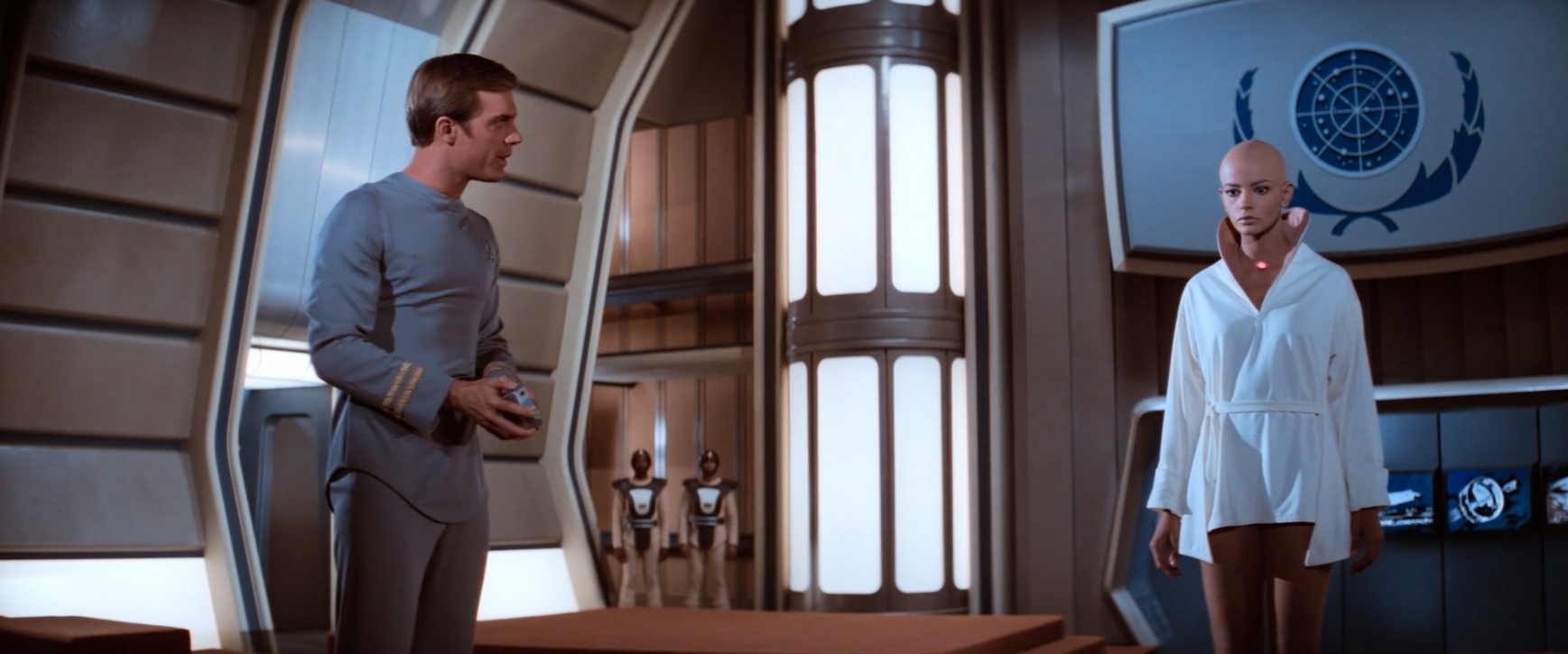
David Williams: And not very practical either.
M. David Mullen: Yeah, but I think the two-piece outfit is fine. It would have been nice if they had gone to the black pants instead of the solid color look, then it would have been a bit more of a throwback to the original, and added some contrast in the outfits so they didn't seem so monotone. Even though I understand why in II, they went for the Navy peacoat design, to me it doesn't make sense for a spaceship for everyone to be...
David Williams: It's a completely controlled environment.
M. David Mullen: Yeah. Why are they wearing turtlenecks with a wool coat on top? The actors must be sweating up a storm in those outfits. But an air-conditioned spaceship? You know, they should be in shirt sleeves. You know, look at the space shuttle, they're all wearing short sleeved polo shirts. That's why I like in Star Trek [TMP], when Kirk comes out in that white T-shirt design. I was kind of like, "Oh, yeah, that's probably what spaceship wear would be like." Having said that, maybe the designs could have been a little more flattering, had a little more snap to them color-wise or shape-wise, but... The admiral outfit that Kirk shows up in is everyone's favorite, and apparently, that was going to be the design for all the costumes, but Roddenberry's felt it looked too militaristic. You know, I once got to go to a screening of Star Trek III with Leonard Nimoy at the DGA. And afterwards, someone asked him about his approach to Star Trek. And he said, first he said, "I think I'm somewhere halfway between Wise and Nicholas Meyer," but he also said, "Everyone's Star Trek is different." So he understands that for some people, Star Trek is space battles and ray guns. And for other people, it's the Kirk, Spock, and McCoy triangle. For other people, it's alien worlds.
David Williams: But that's a great thing about the, to use the term "franchise," it's incredibly elastic. And look at how it has been interpreted over not only this feature film series, but multiple series, etc. And continues on, in part because it is open to so much interpretation based on the characters.
M. David Mullen: Yeah, I think what's nice about the new [Trek] series, like Strange New Worlds is they're going back to a non-contiguous story arc, where they can do individual episodes, they're allowed to do the analogy episodes where "this is a substitute for Vietnam," like what science fiction can do so well. When they get into the big expensive features, it all tends to be melodramatic action movies, because that's what sells, you know. An idea-based story, you can get away with an episode like that that's an intellectual conceit, because the whole franchise isn't gonna hang on it. But when they spend millions of dollars on a single film, they realize, "Oh, it's gotta have a villain, and it's gotta have explosions, and it's got a lot of running around, and shoot 'em ups."
David Williams: That was the problem with Star Trek: The Motion Picture. The problem, I put in air quotes.
M. David Mullen: There are parts of it that could be paced up a little bit at times. I do think it needed a little more variation and structure. It's just a little bit too much on the bridge of the Enterprise. I think, if they either extended the first third and made the middle third a little shorter, it would have flowed better. In fact, you know, part of the Director's Cut, they did trim a minute out of here and there to speed things up a little bit. But it's a structural problem in the script, I think, that they just designed a story that forces them all to get on the Enterprise and stay on there until almost the last 10 minutes of the movie. But still, if you're a Star Trek fan, spending two hours on the bridge Enterprise isn't the worst time spent. So I enjoy it.
David Williams: Well, let's wrap it up there because I think we could talk for another two hours. David, thank you so much for being here today. I was so looking forward to this. Your enthusiasm was so infectious and your knowledge of all things Trek — very impressive.
M. David Mullen: Thank you.
Follow American Cinematographer on Facebook, Instagram and Twitter.

American Cinematographer interviews cinematographers, directors and other filmmakers to take you behind the scenes on major studio movies, independent films and popular television series.
Subscribe on iTunes